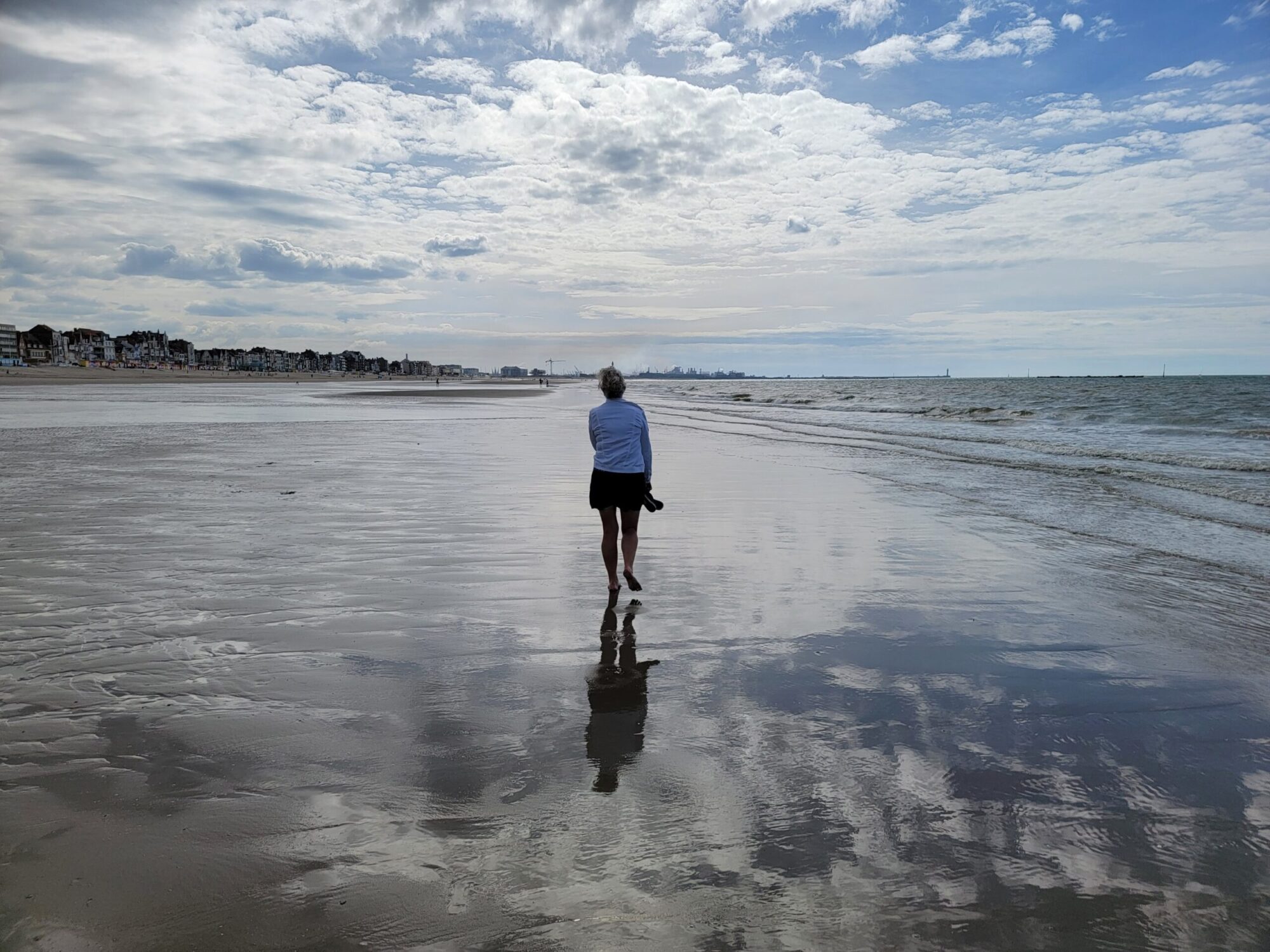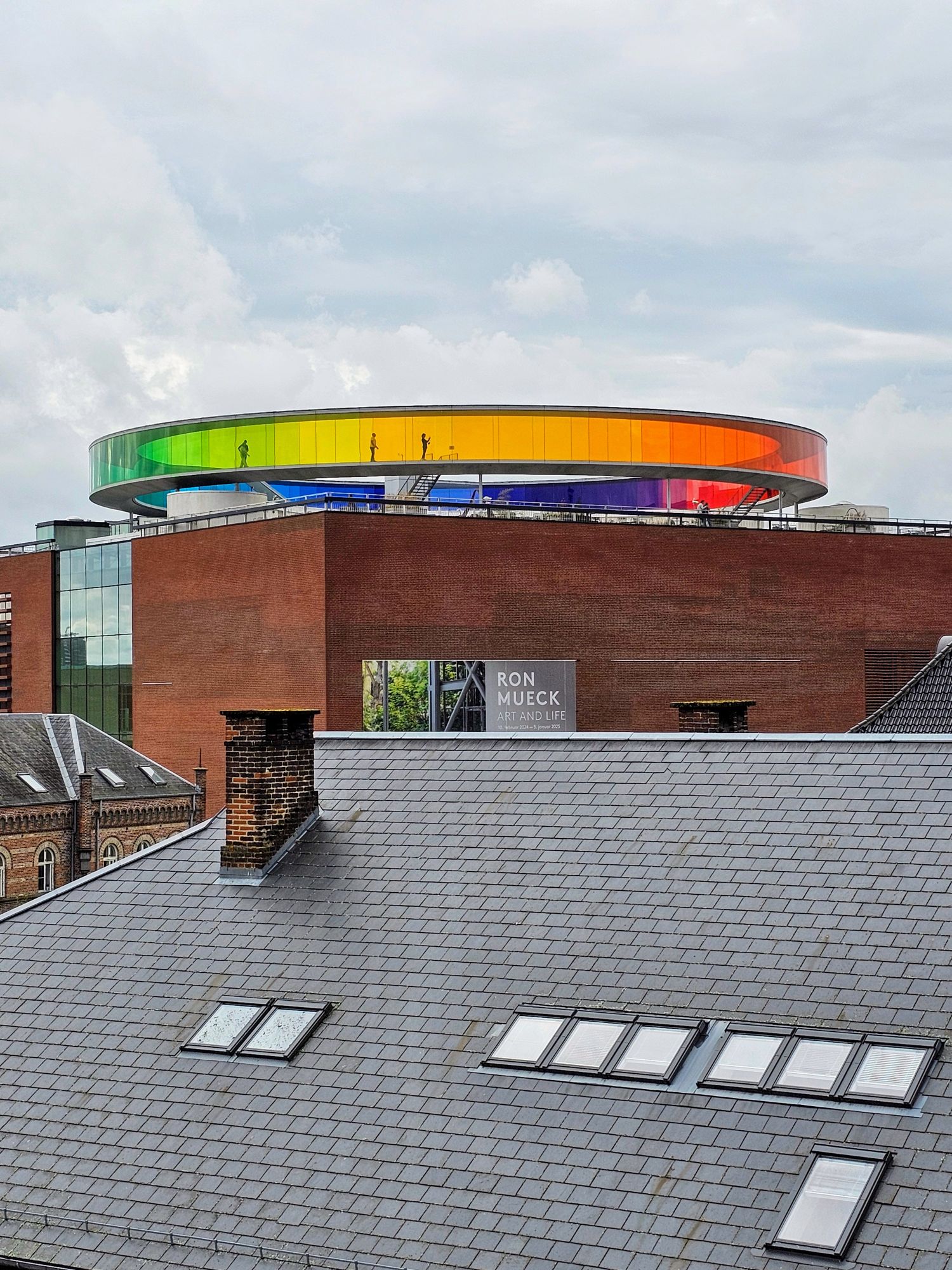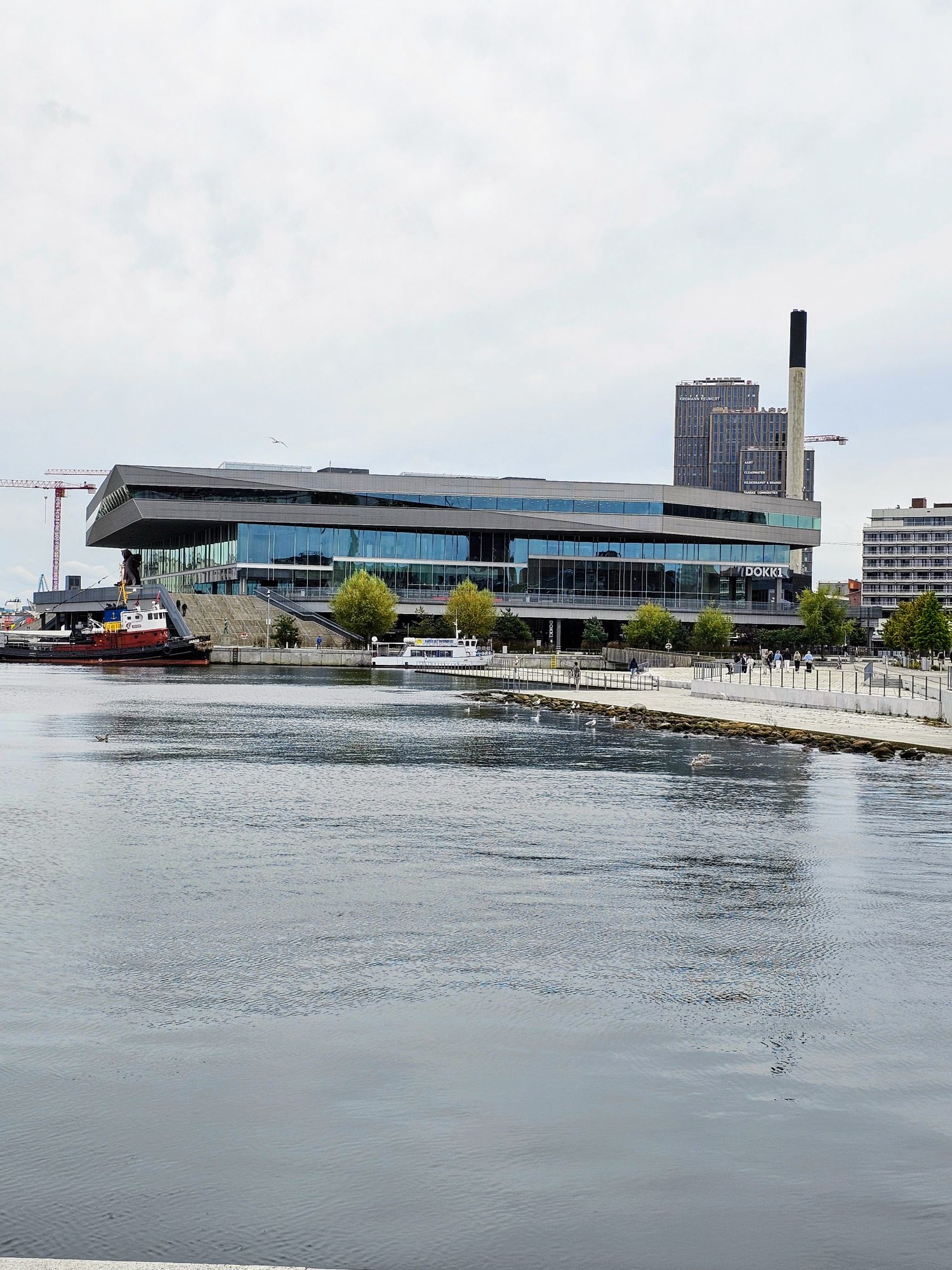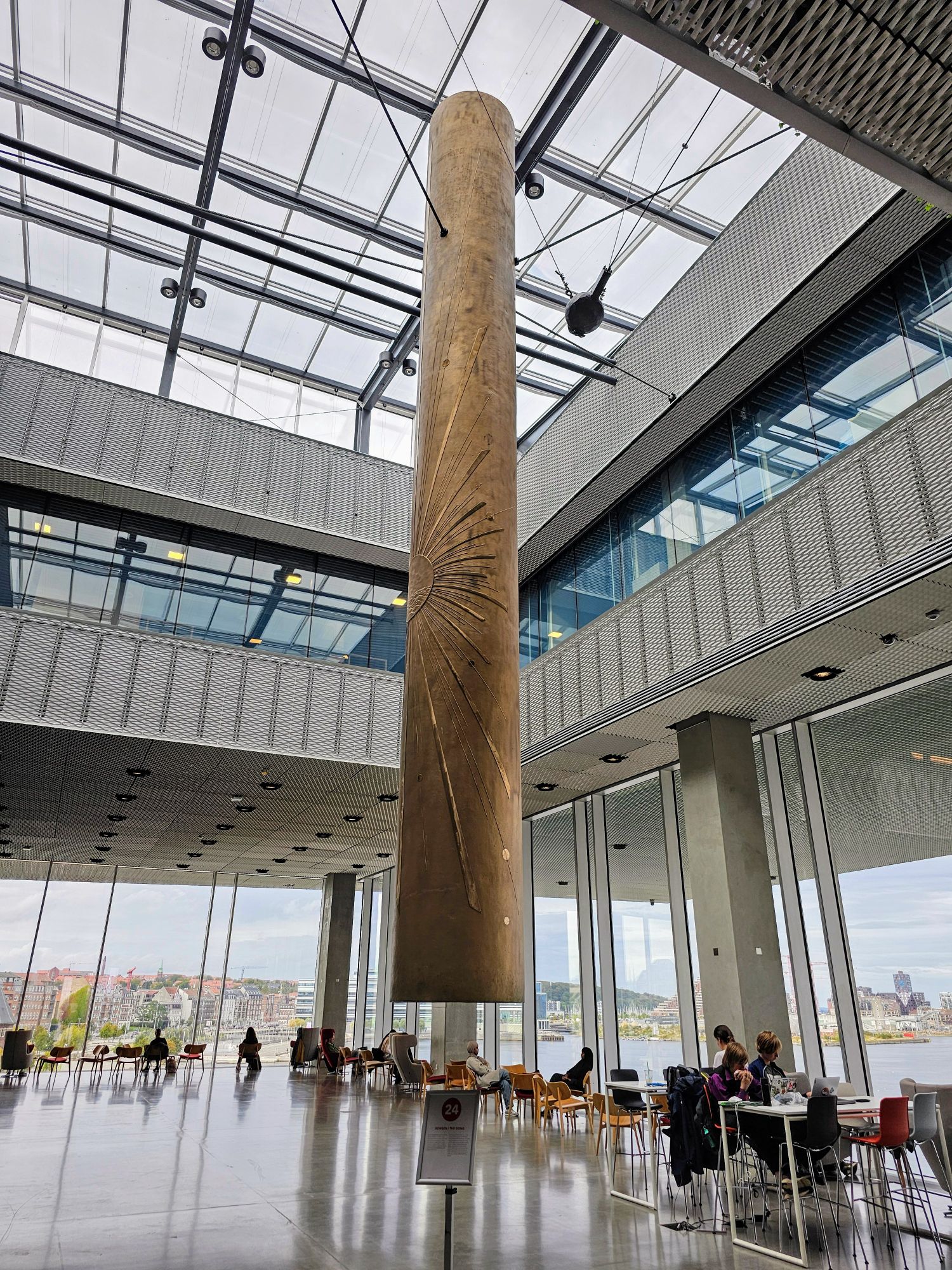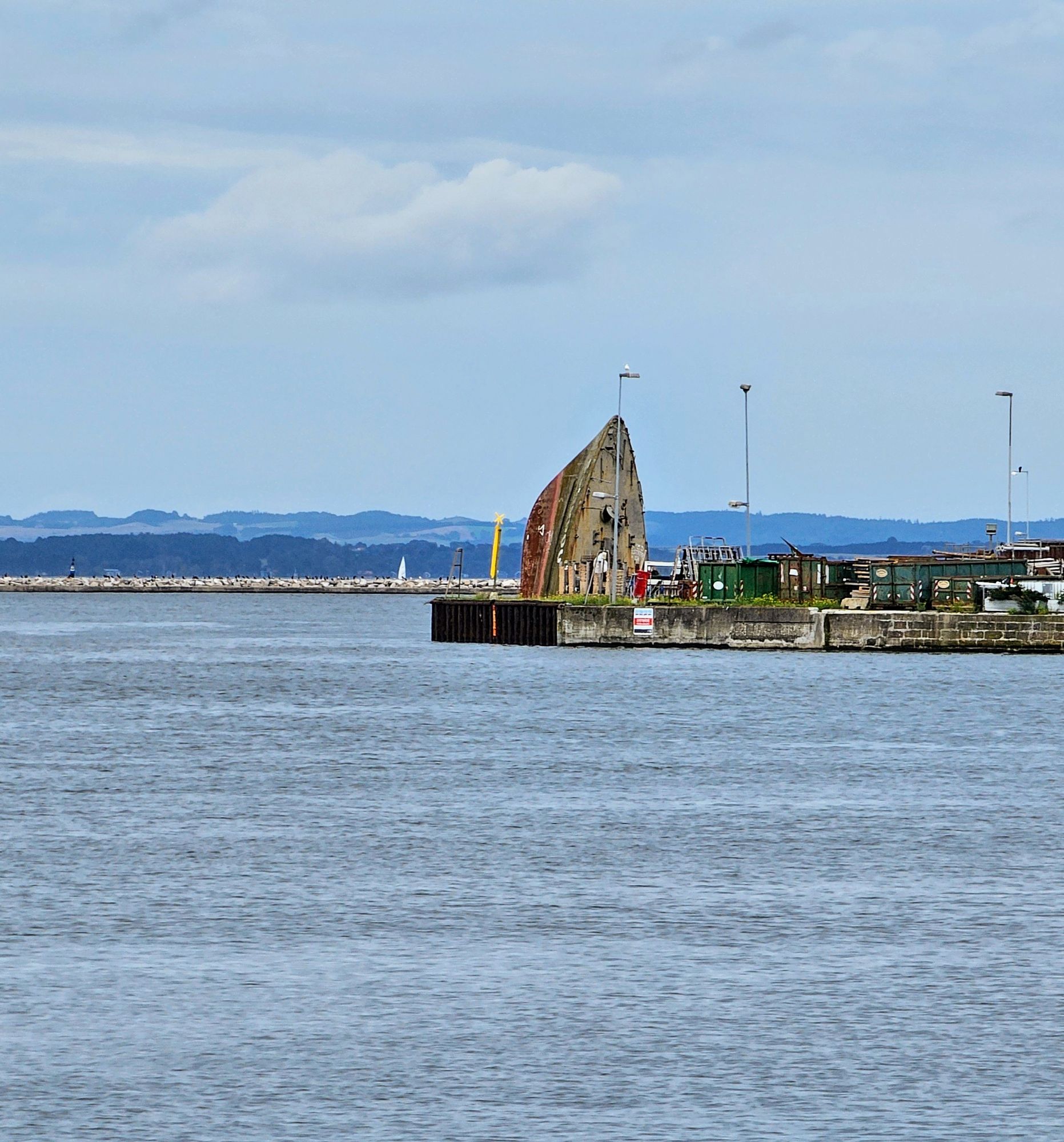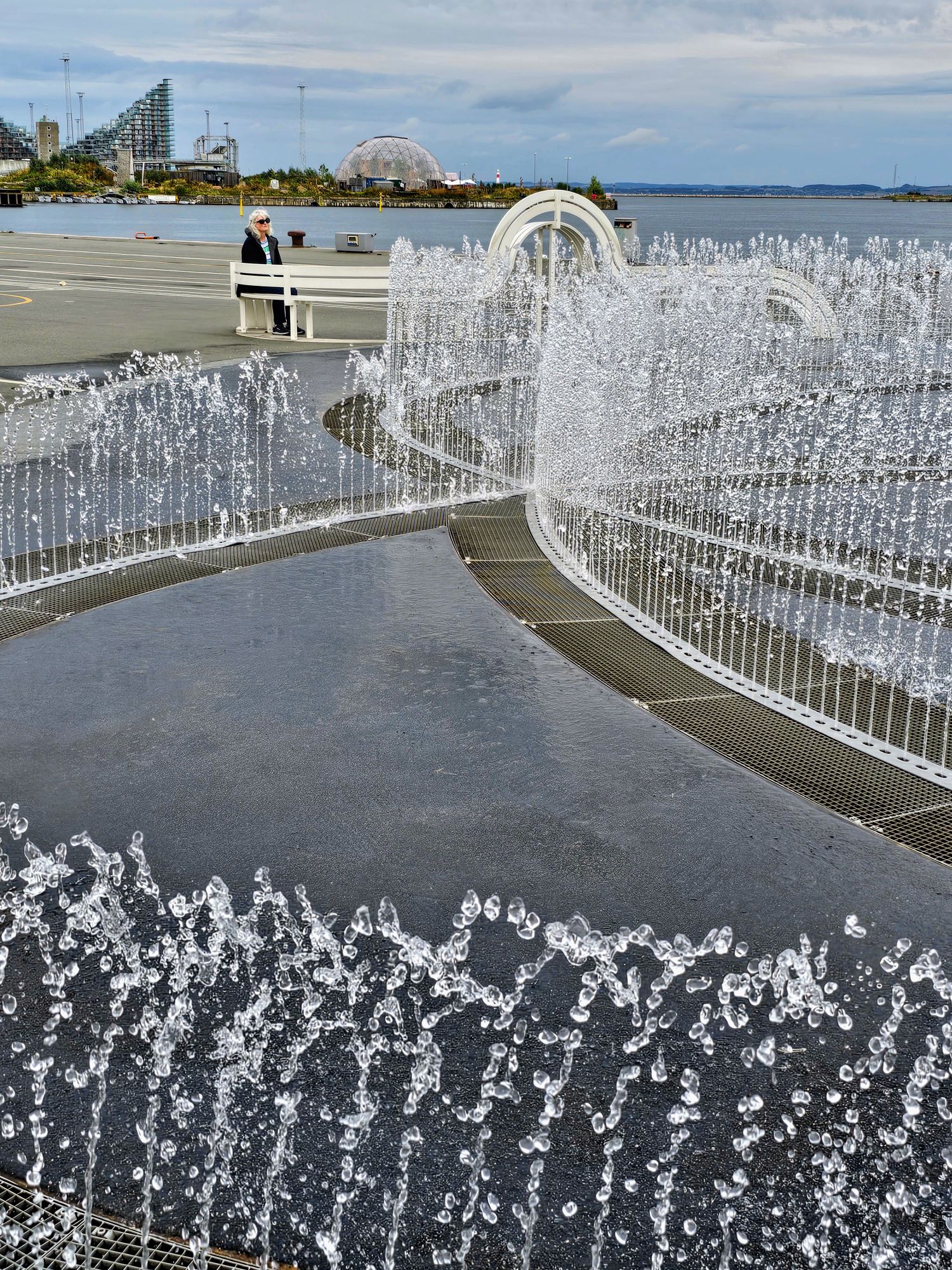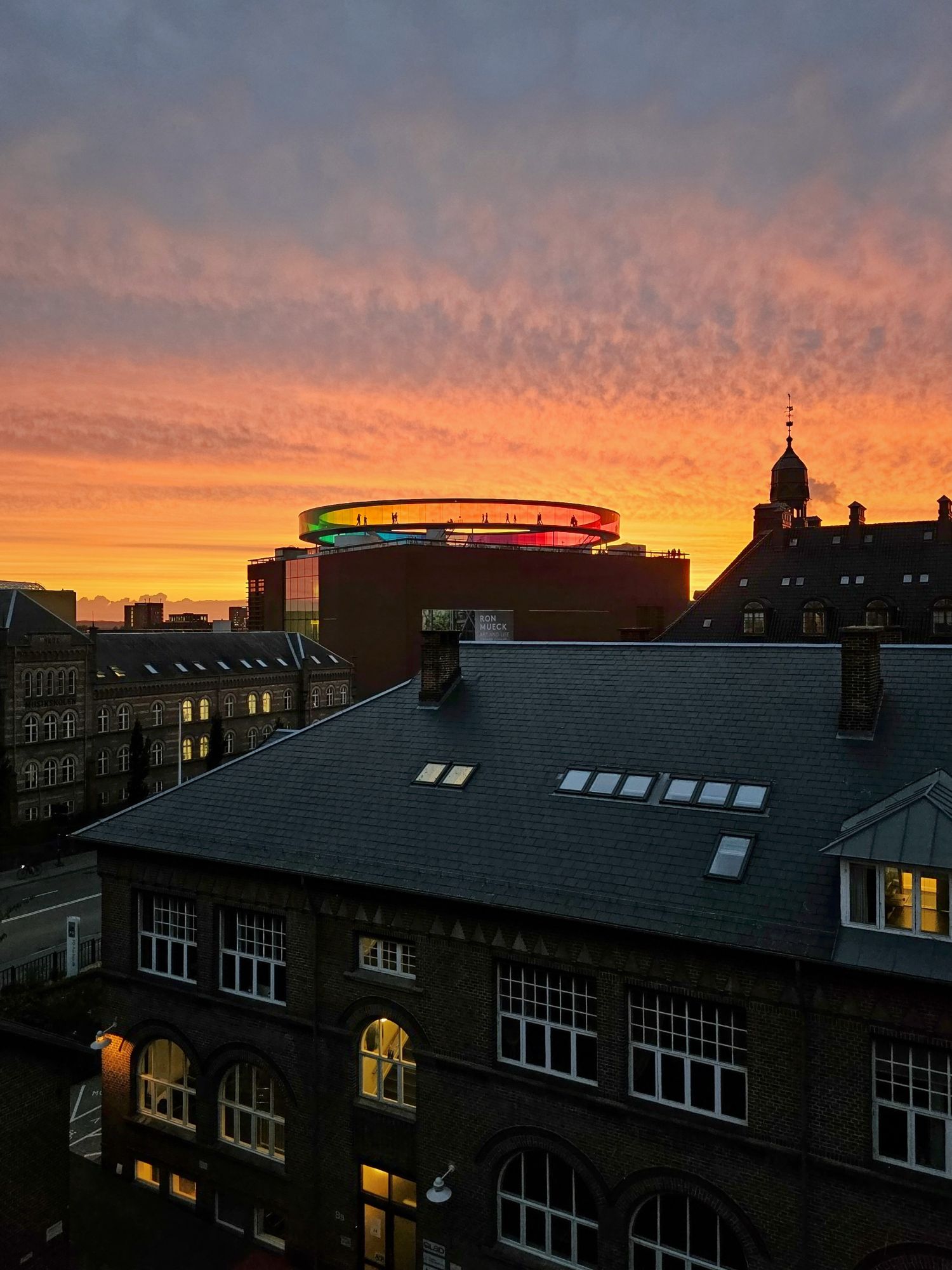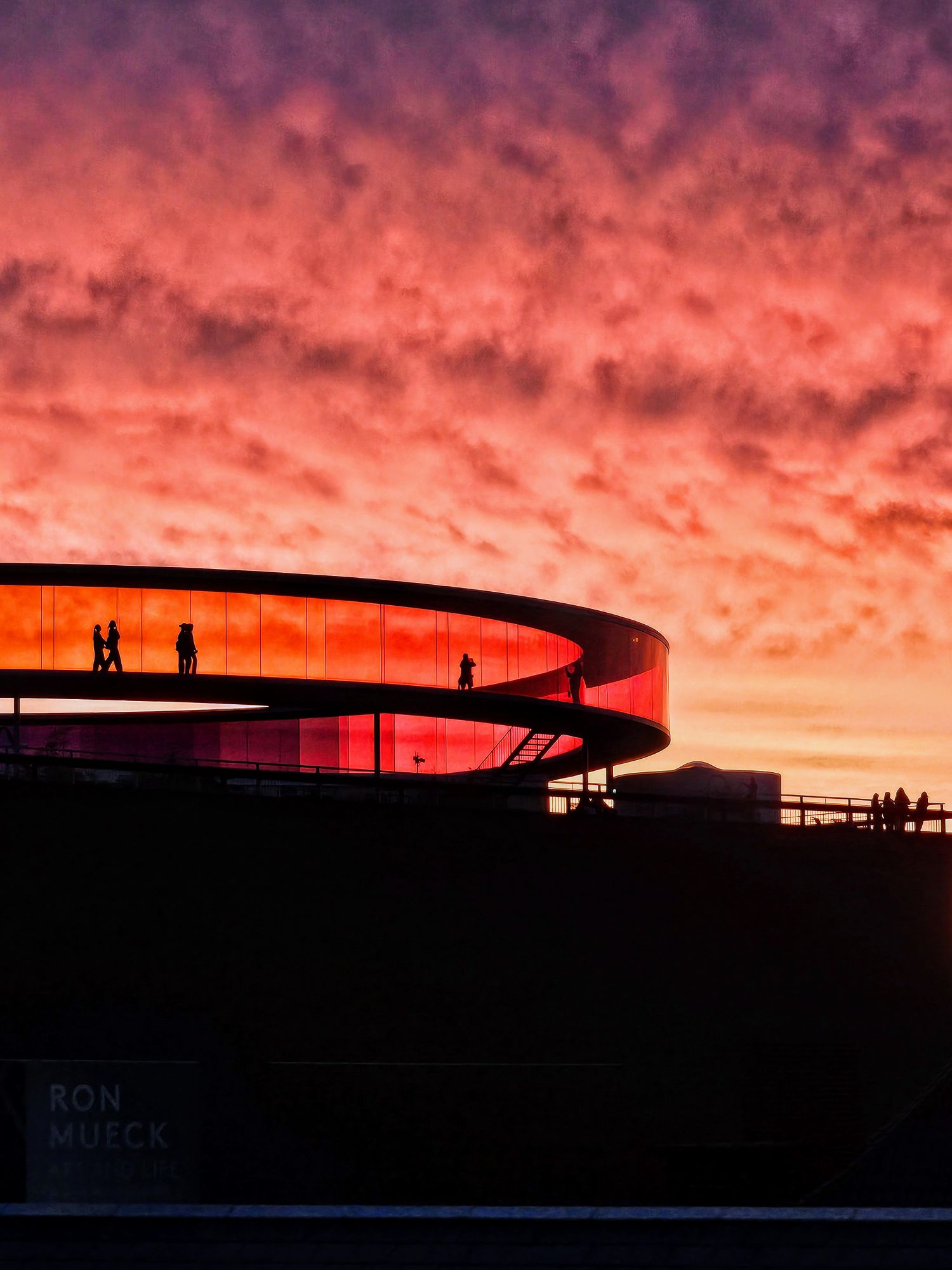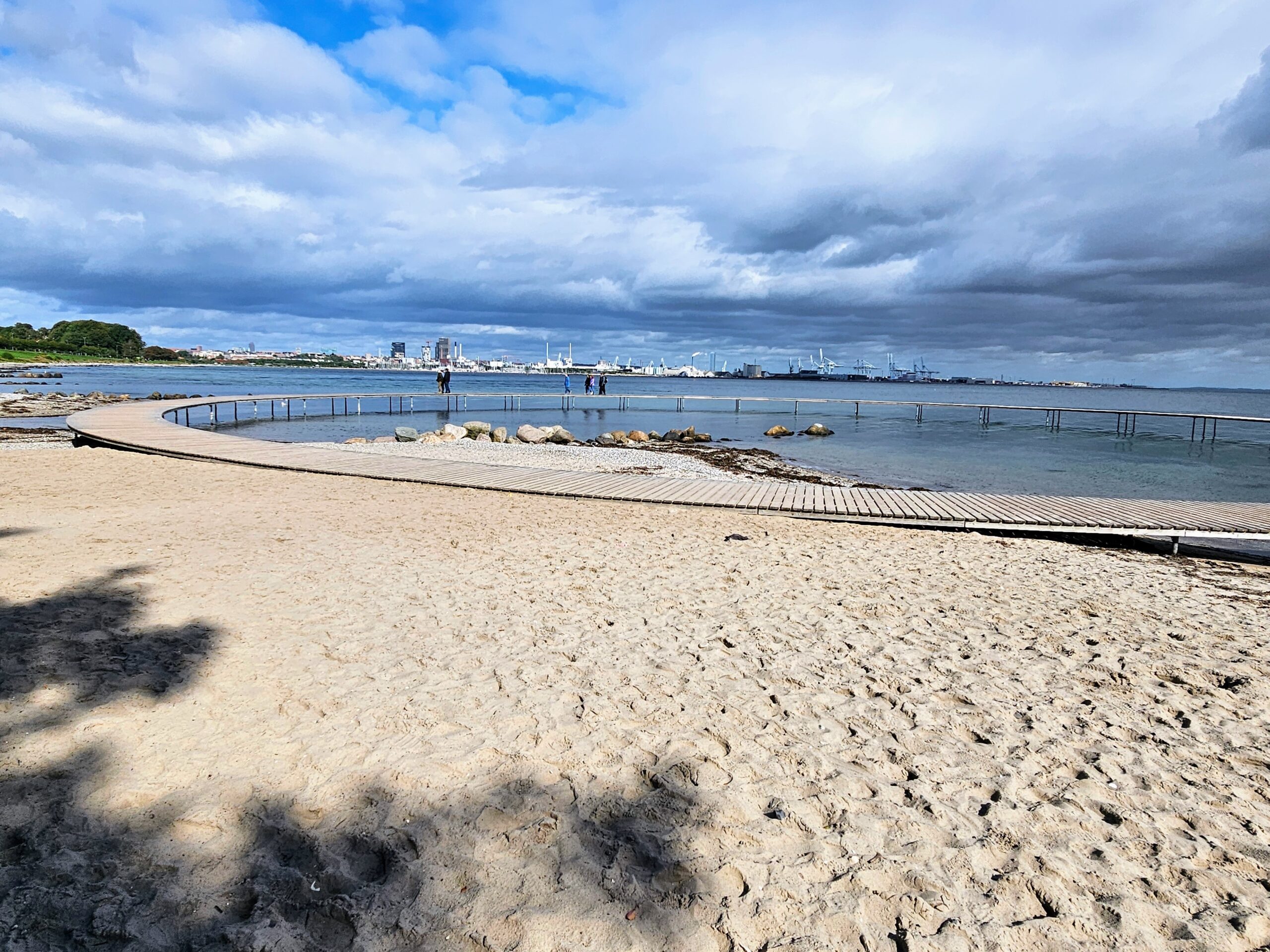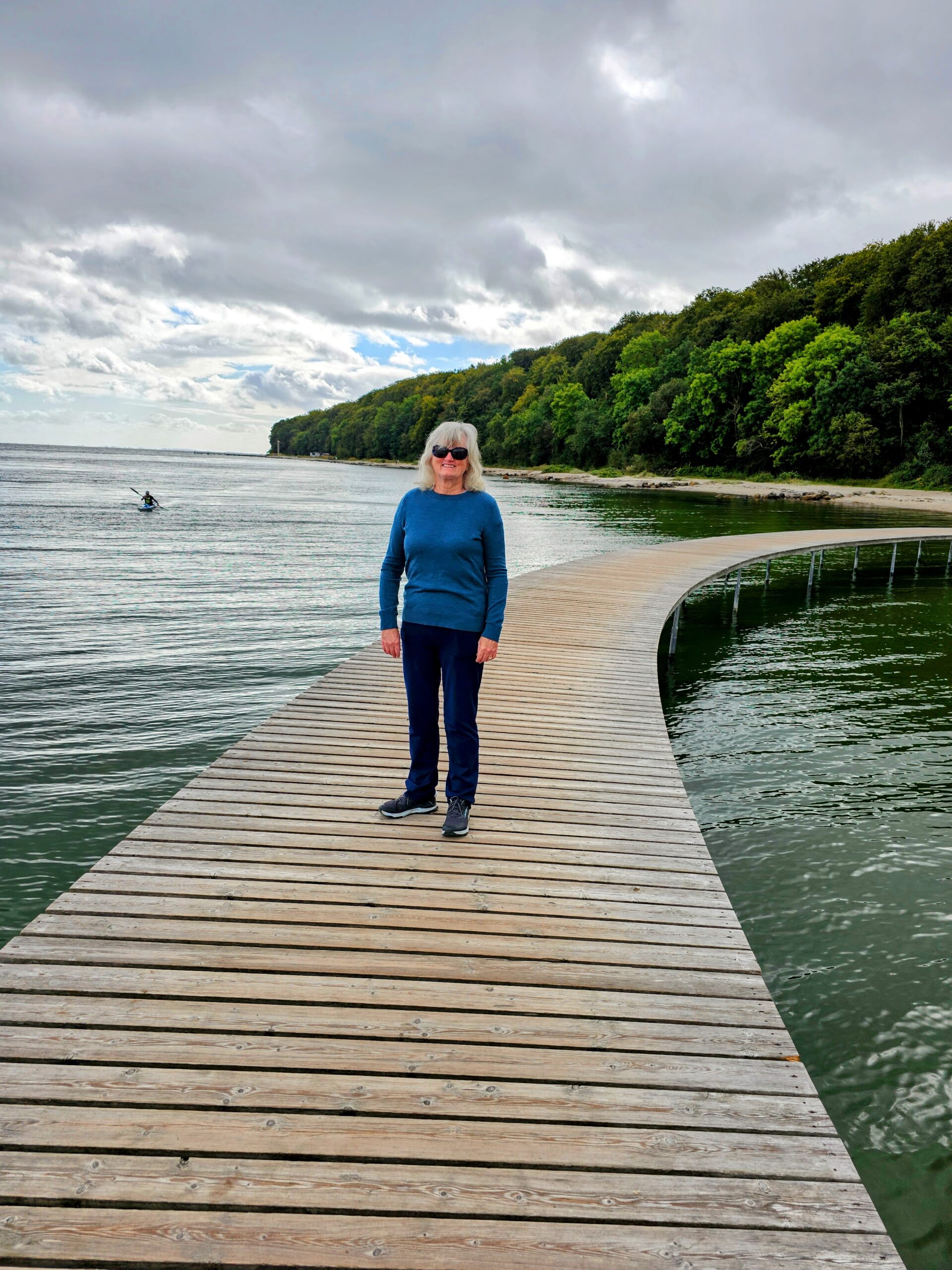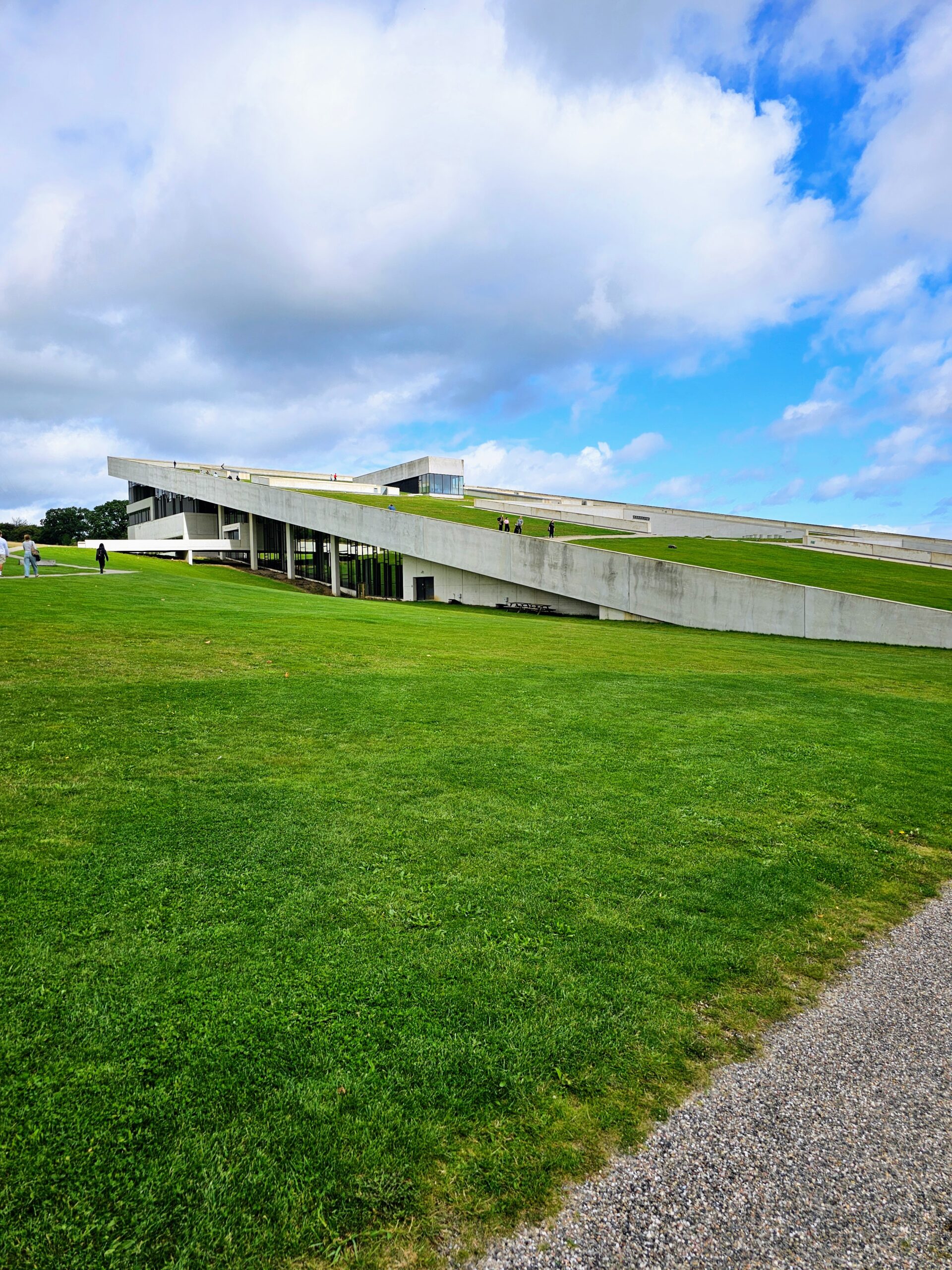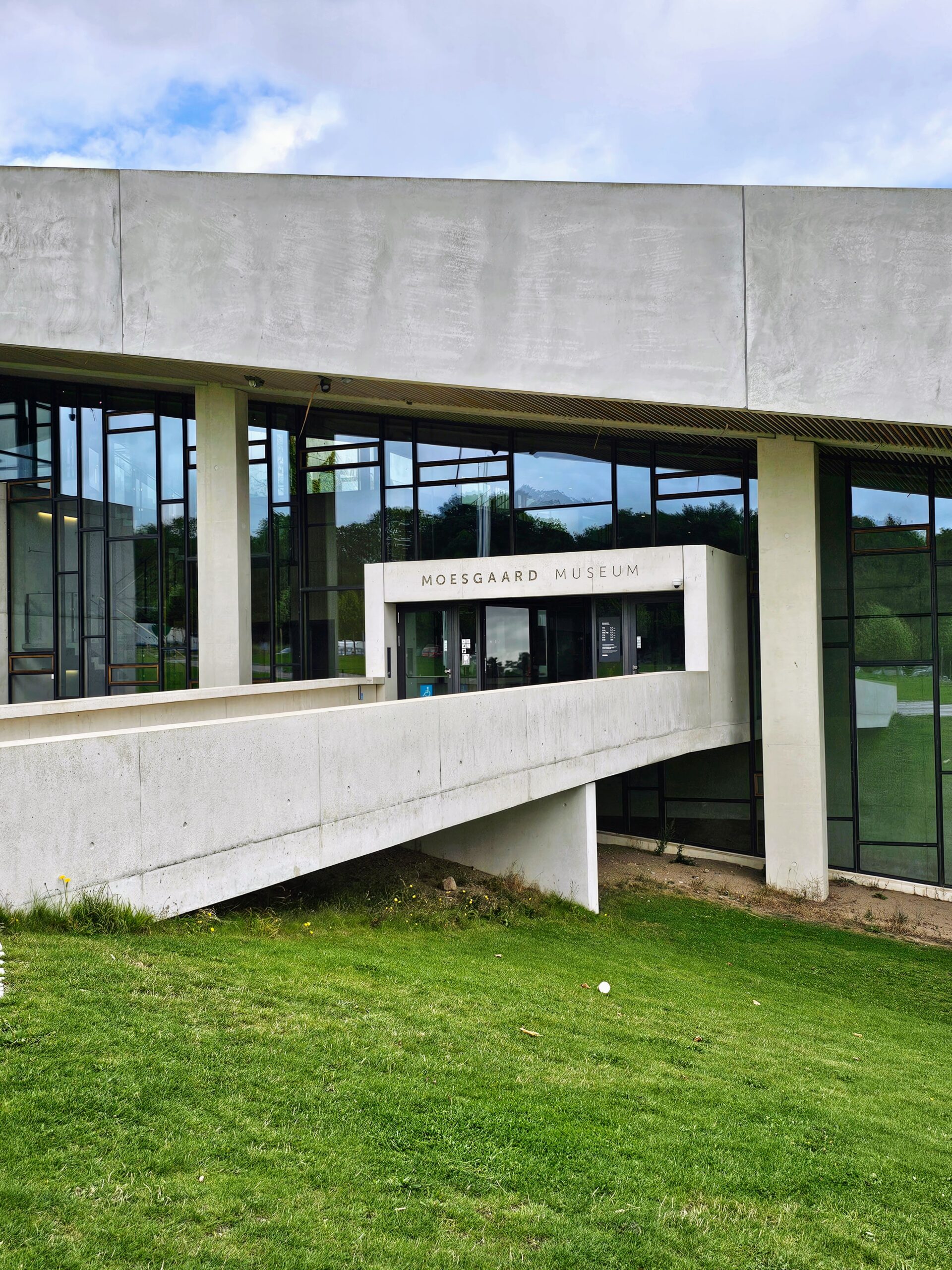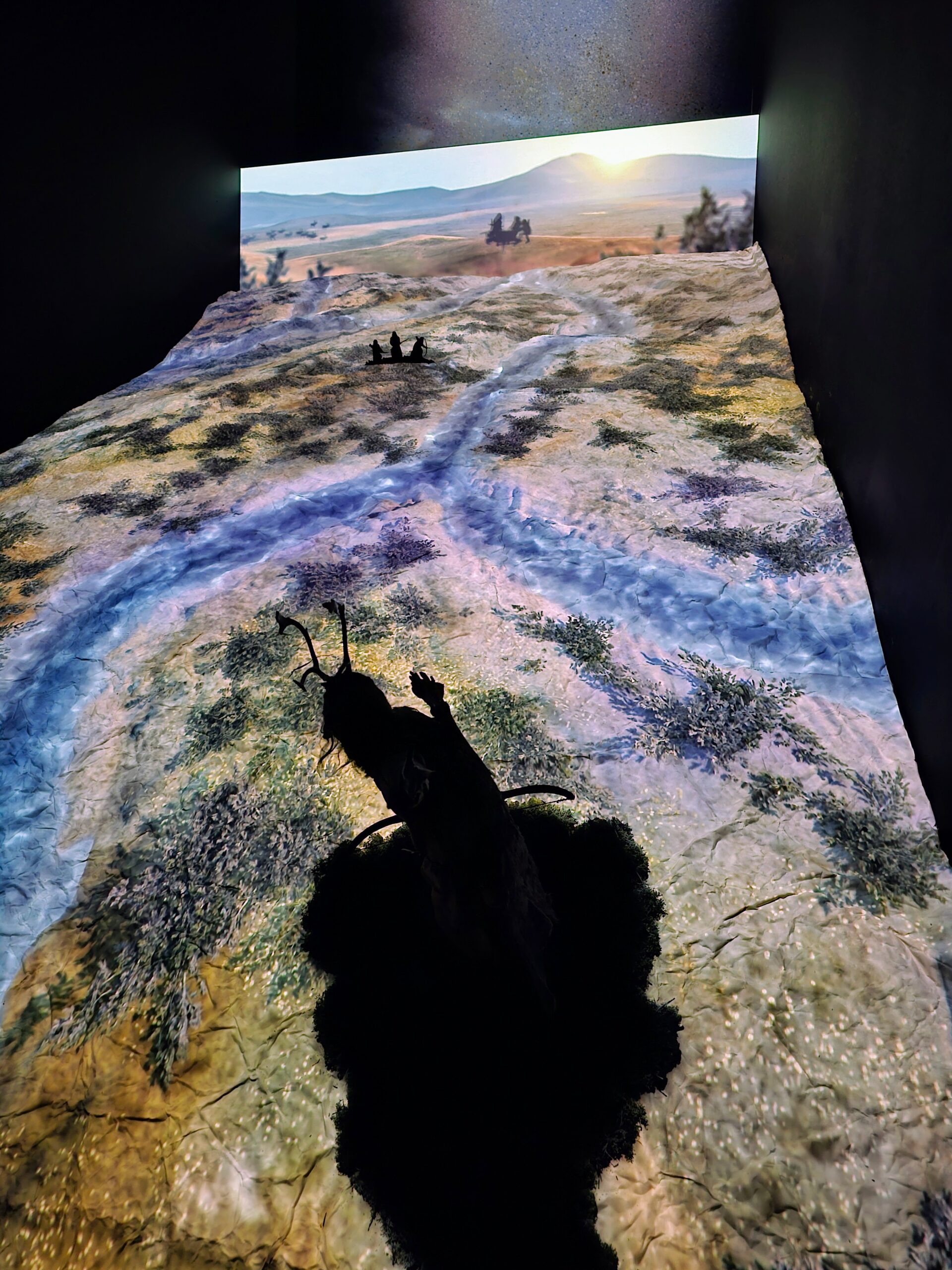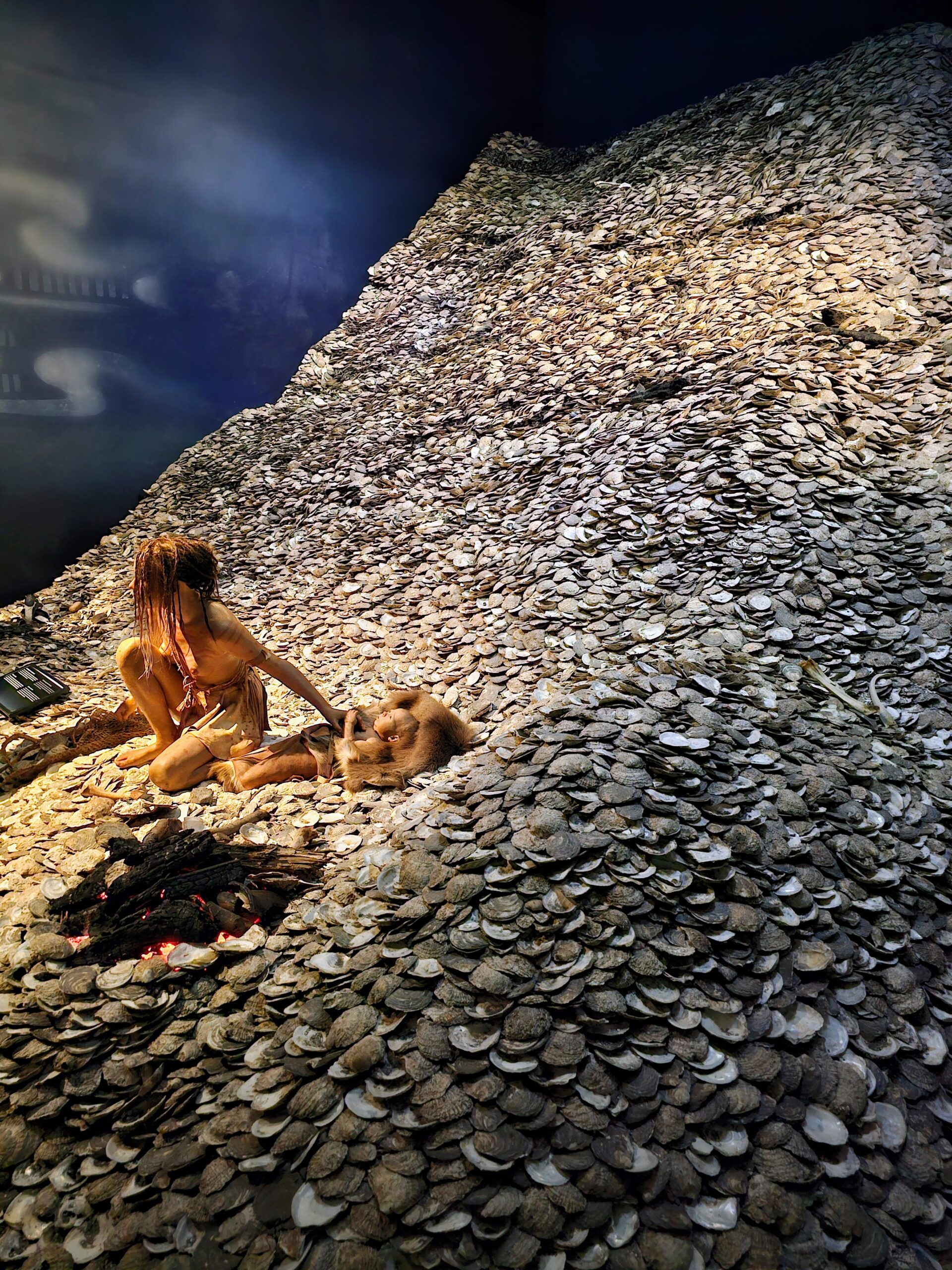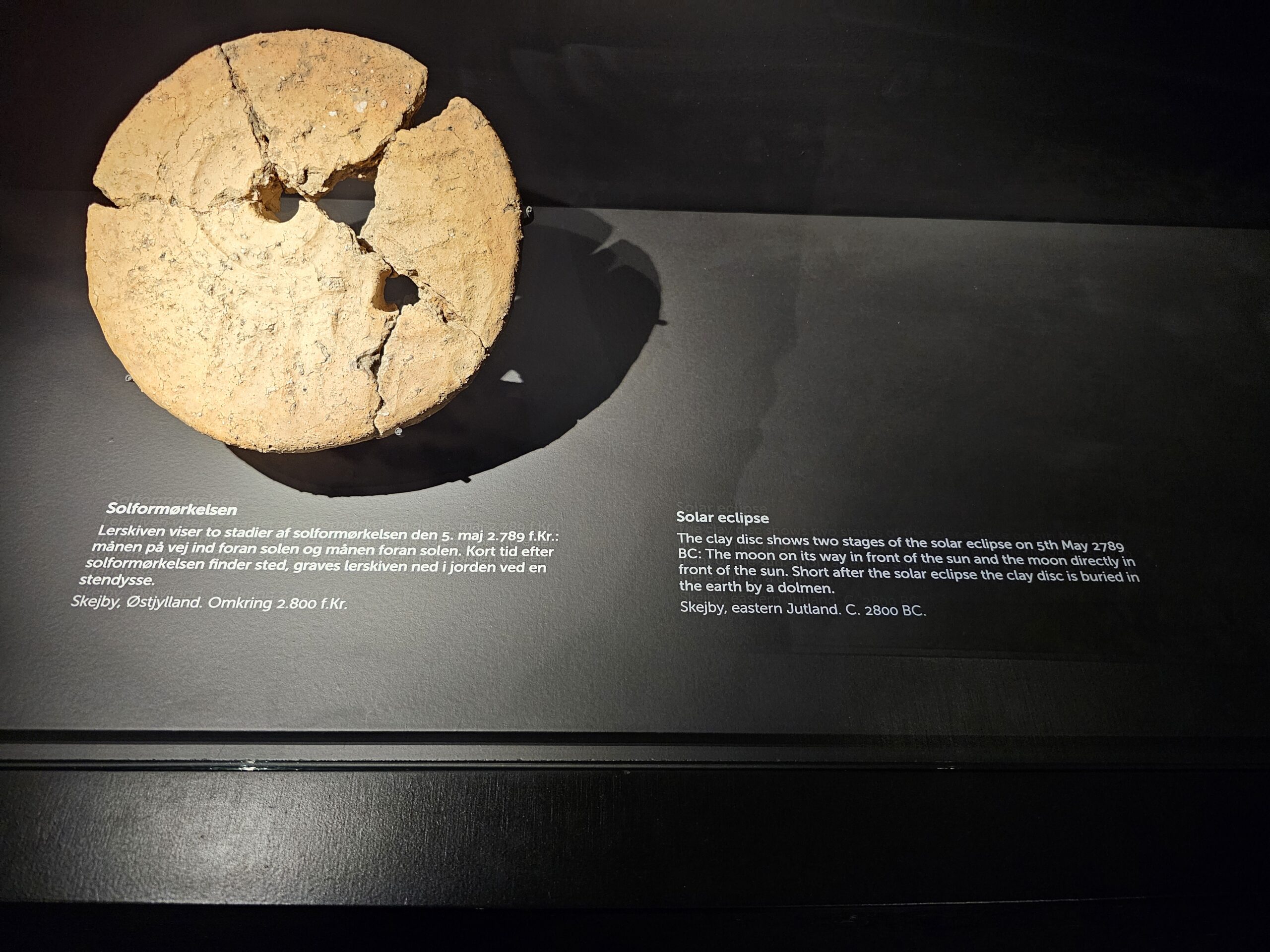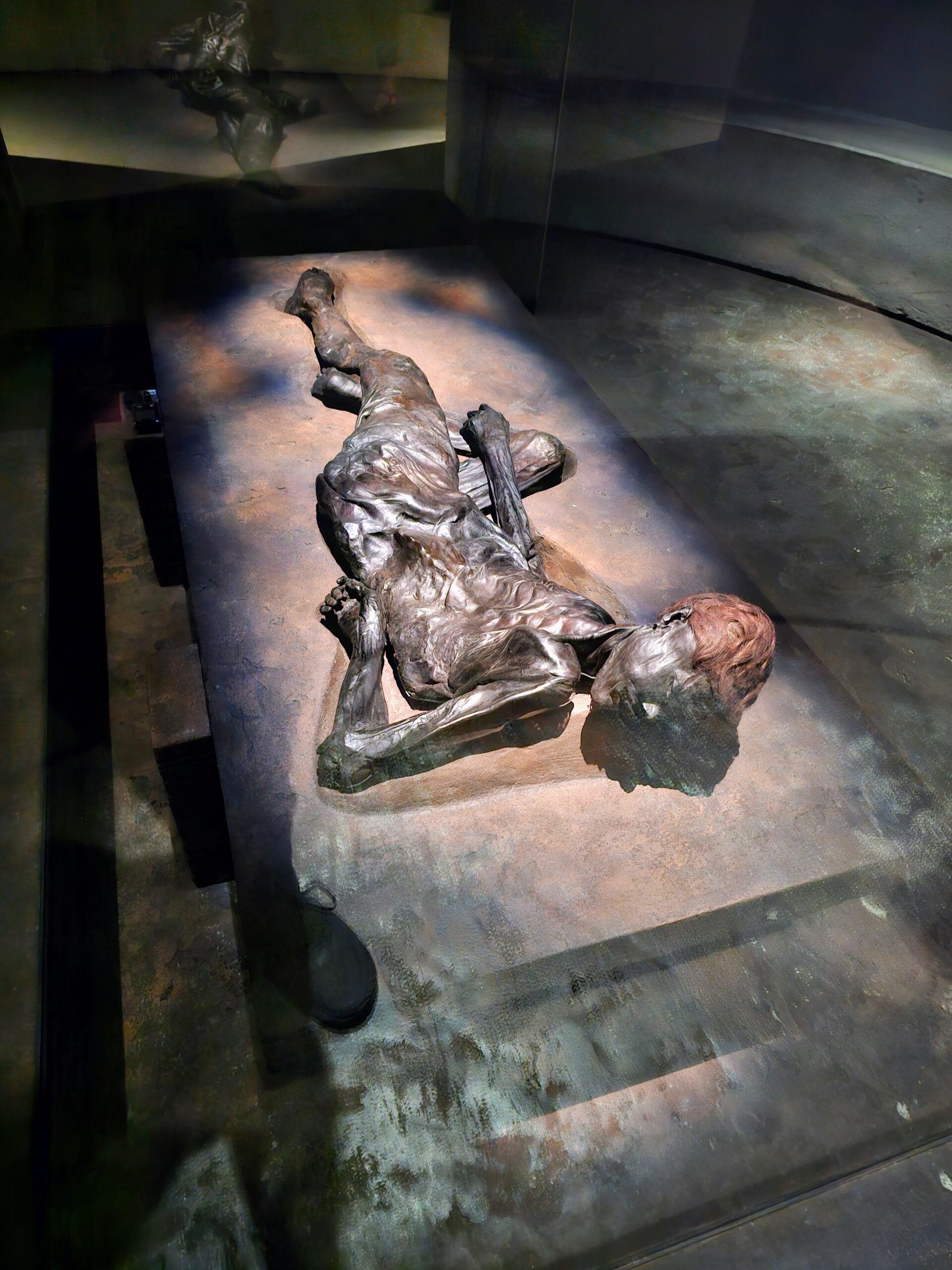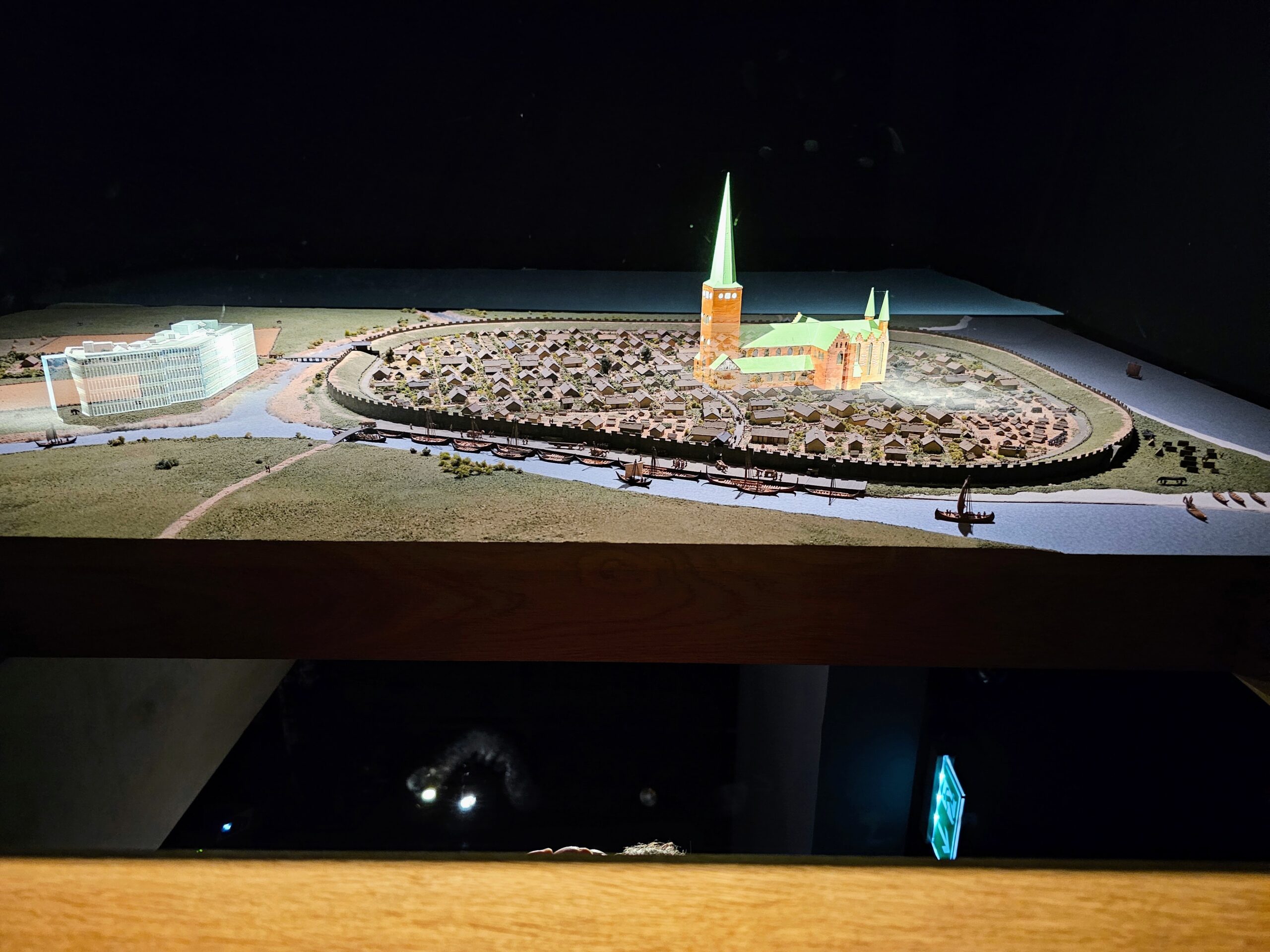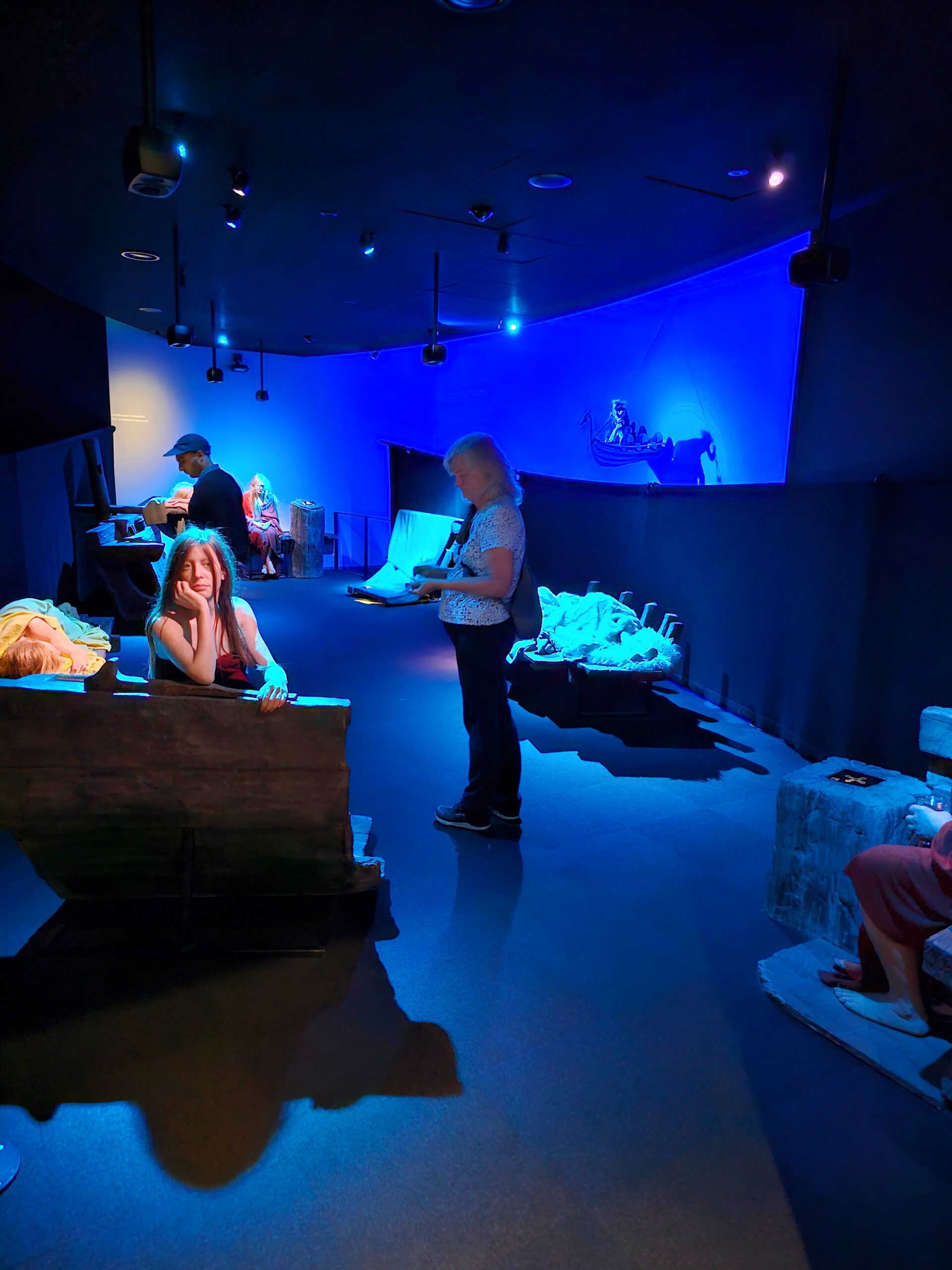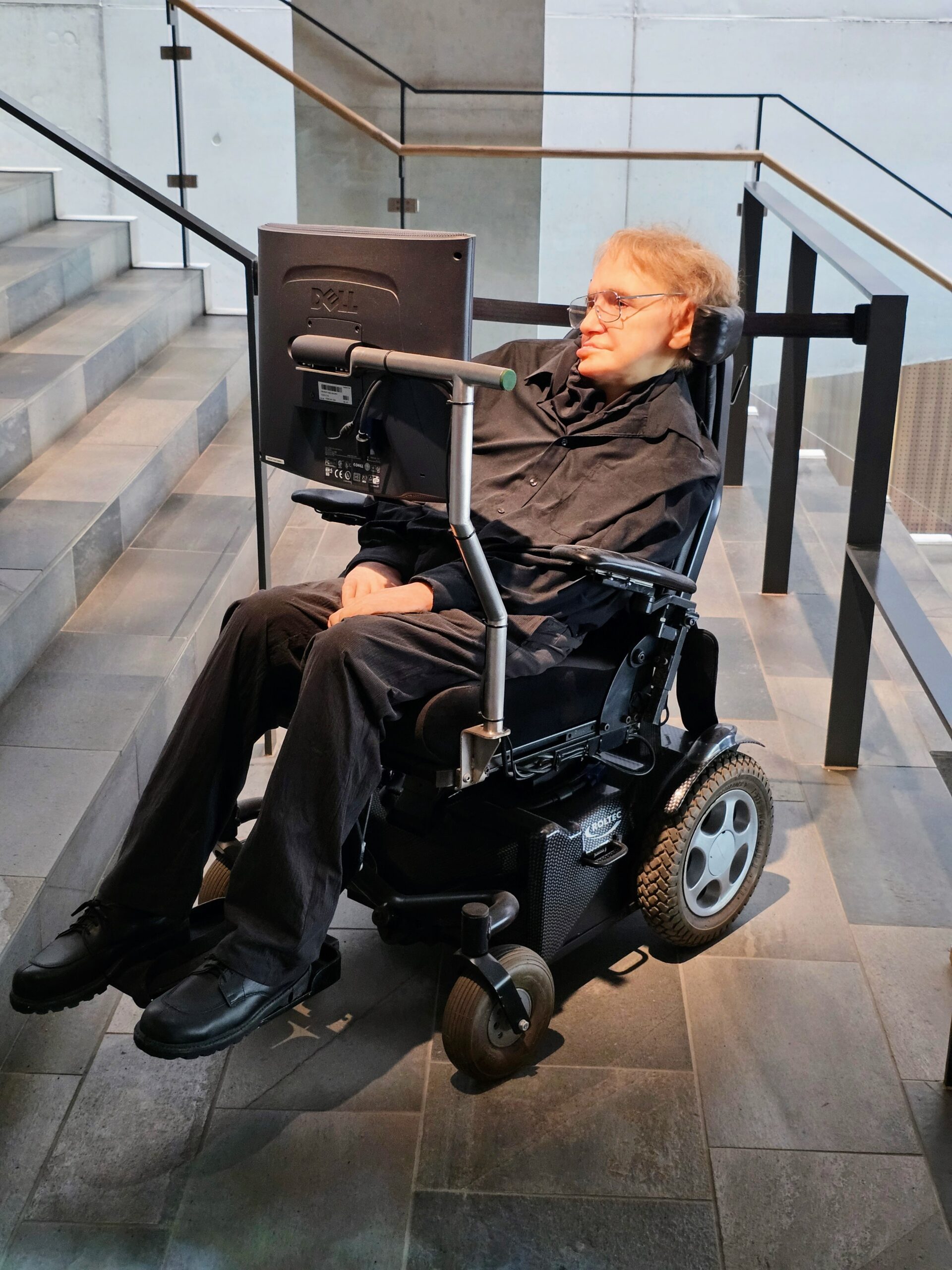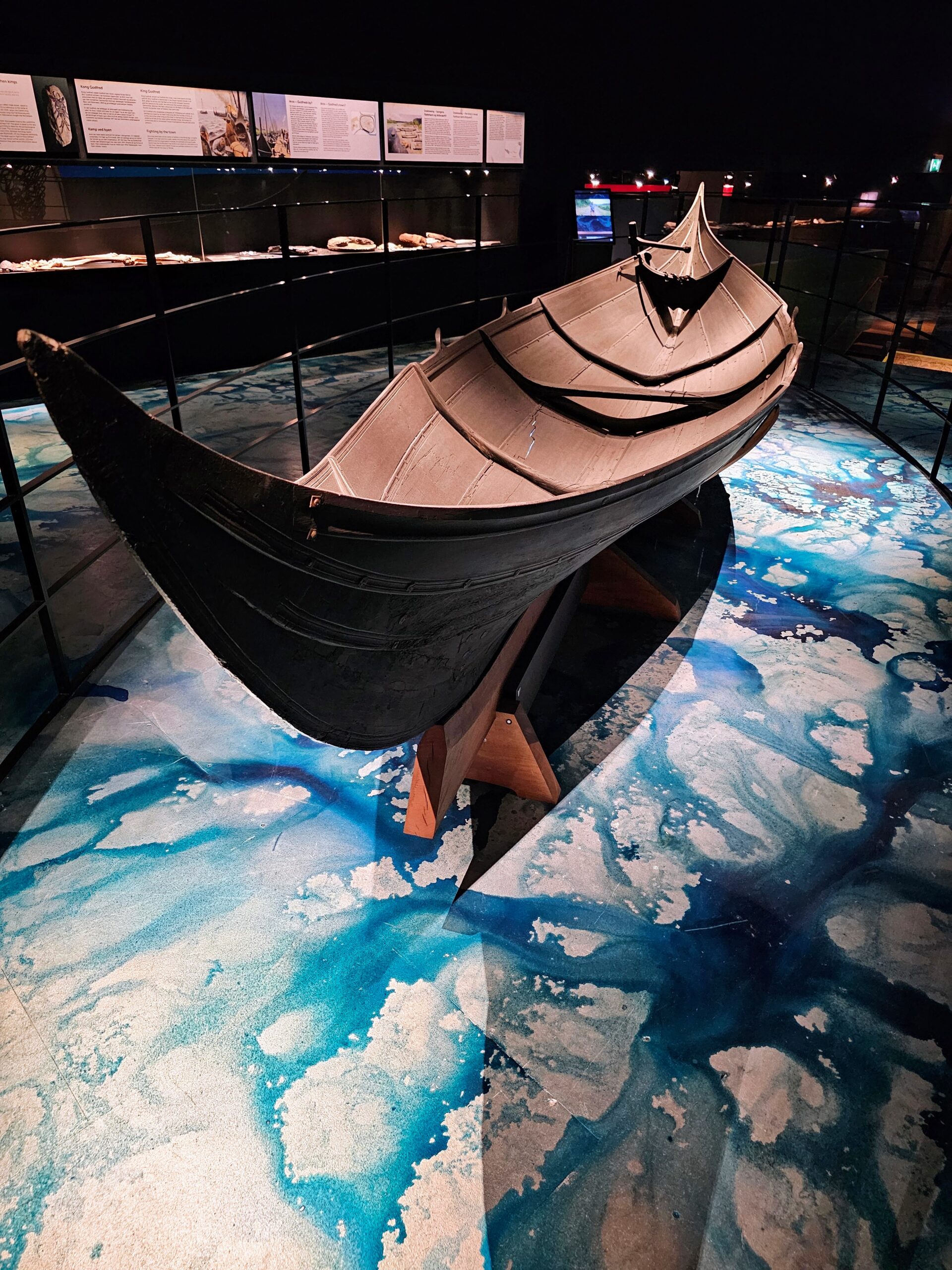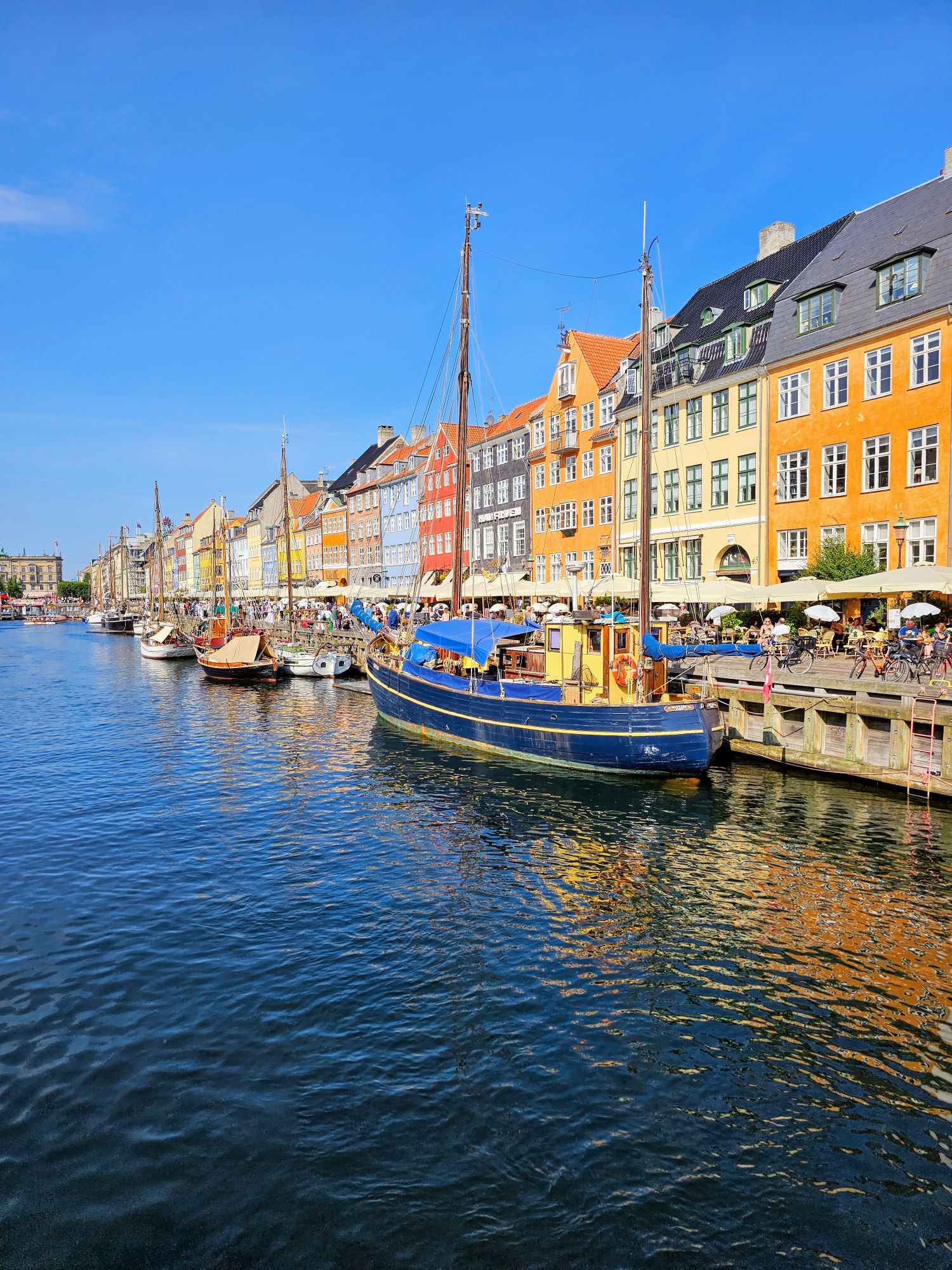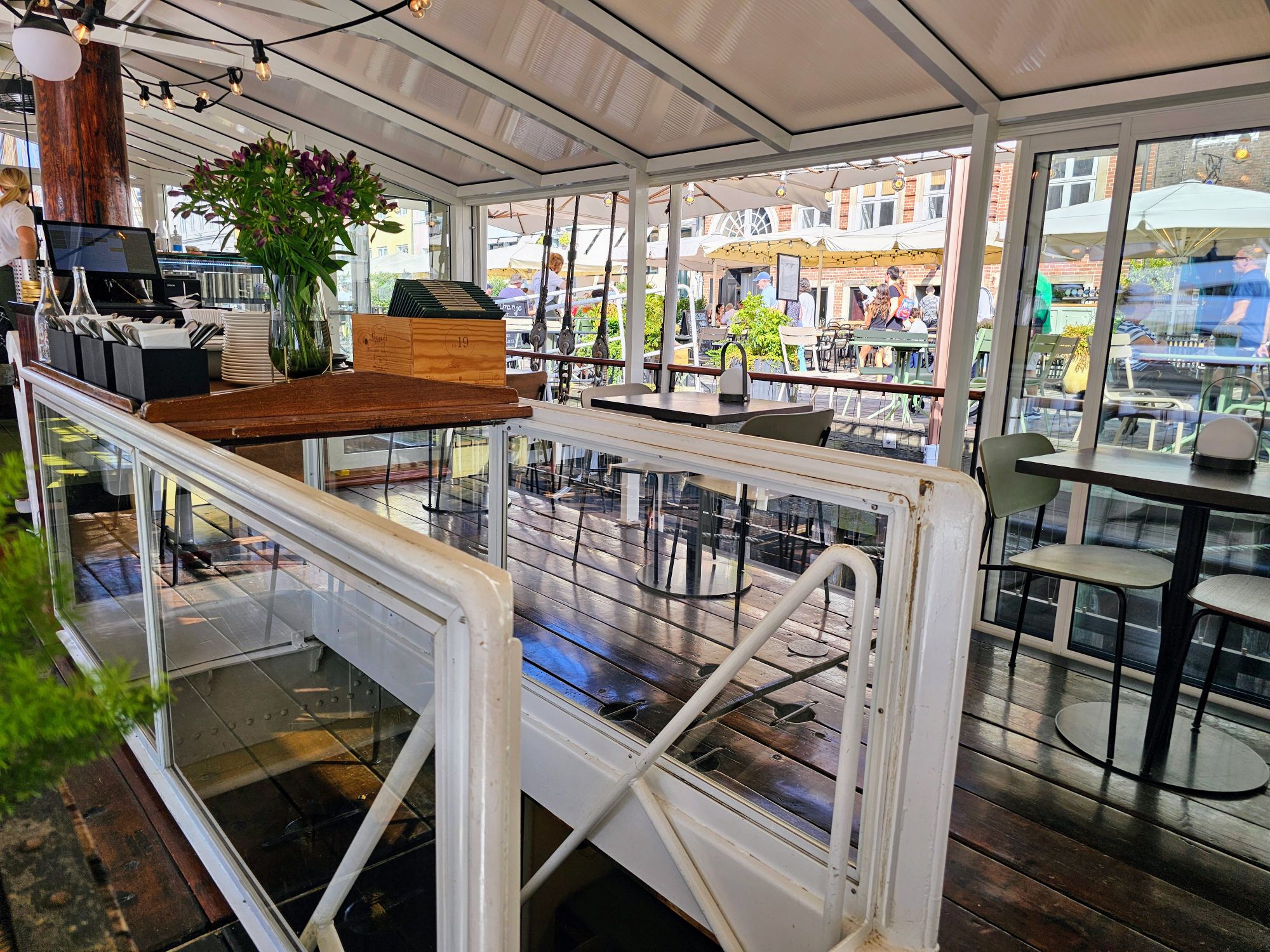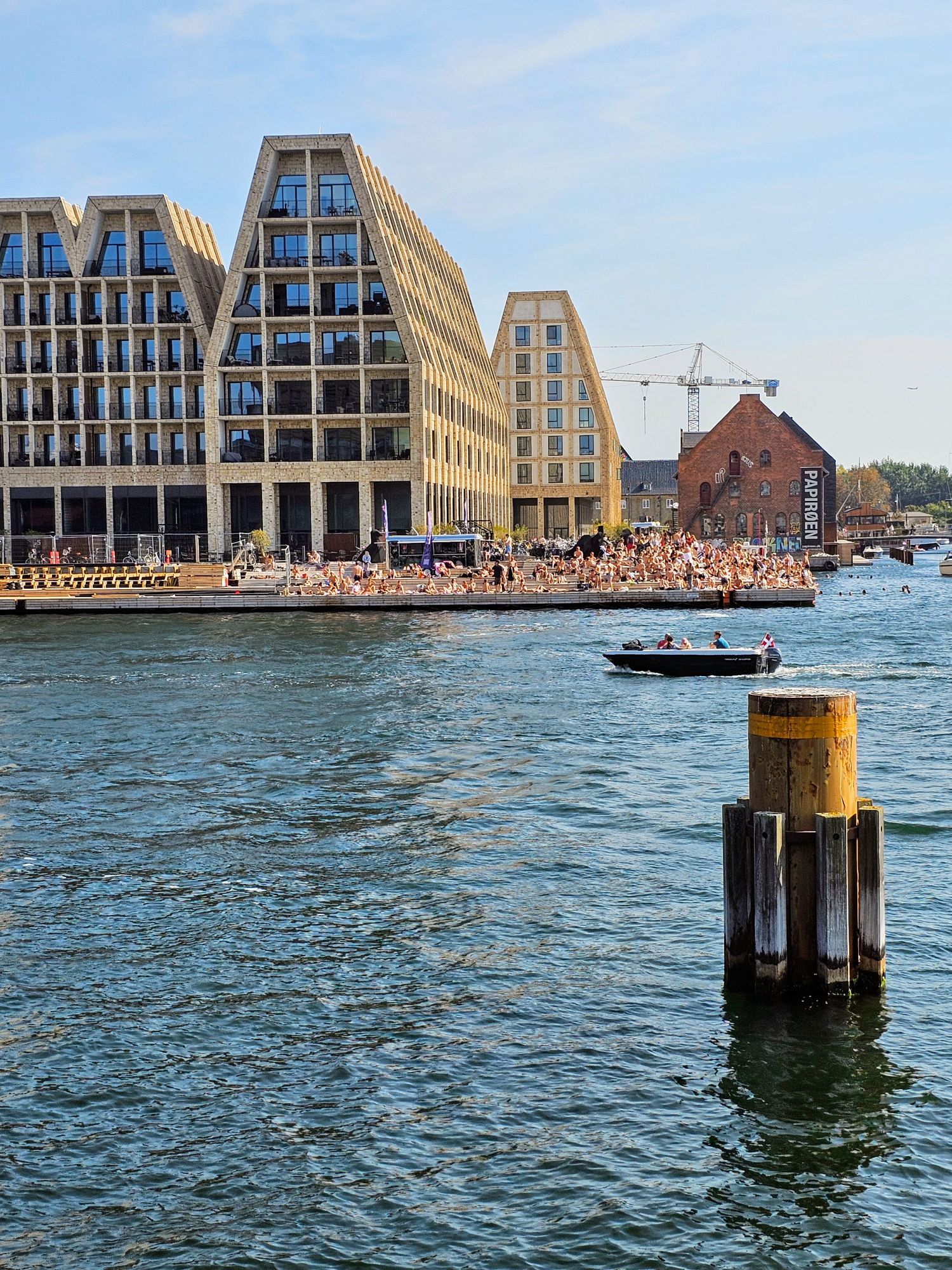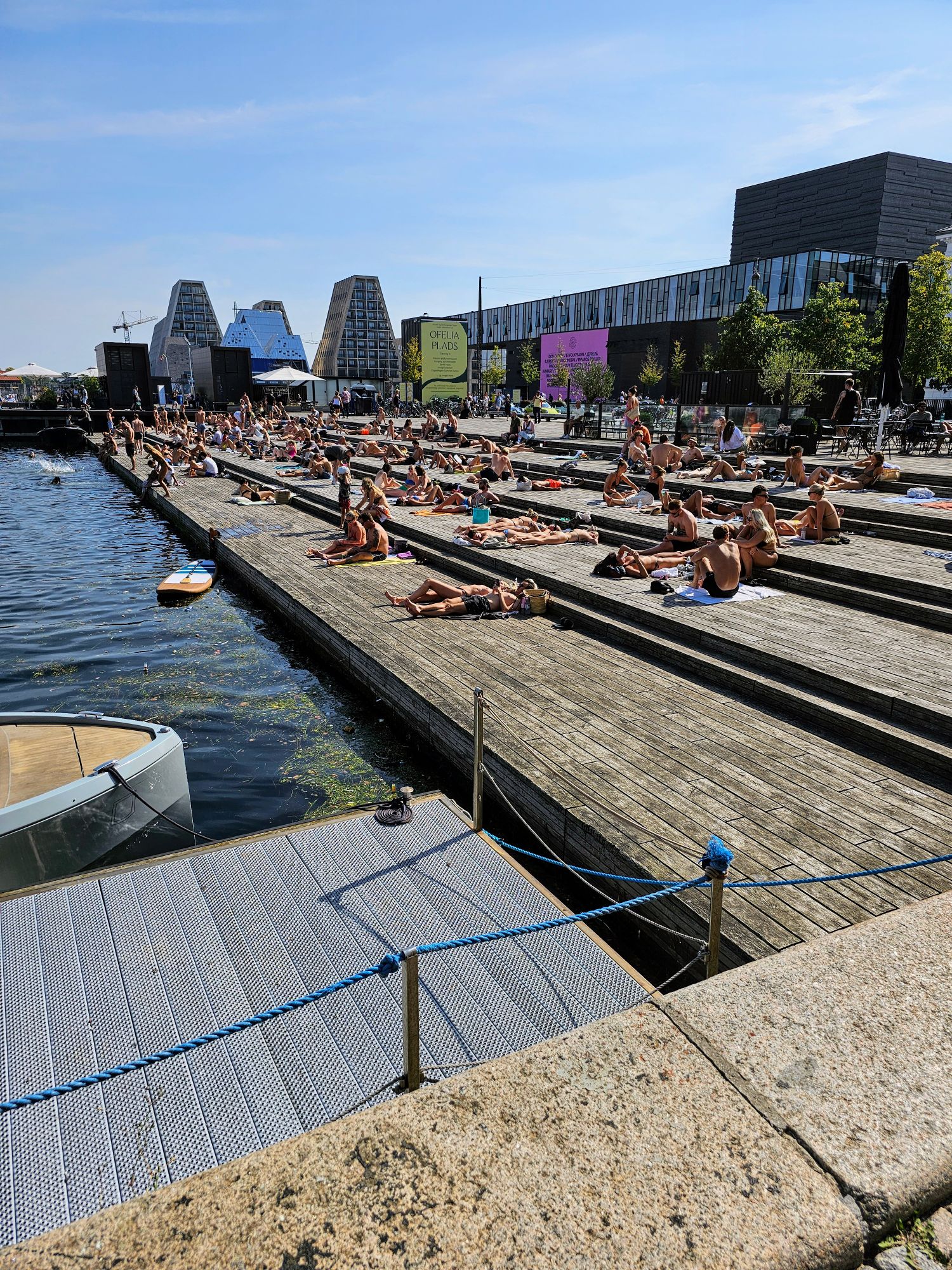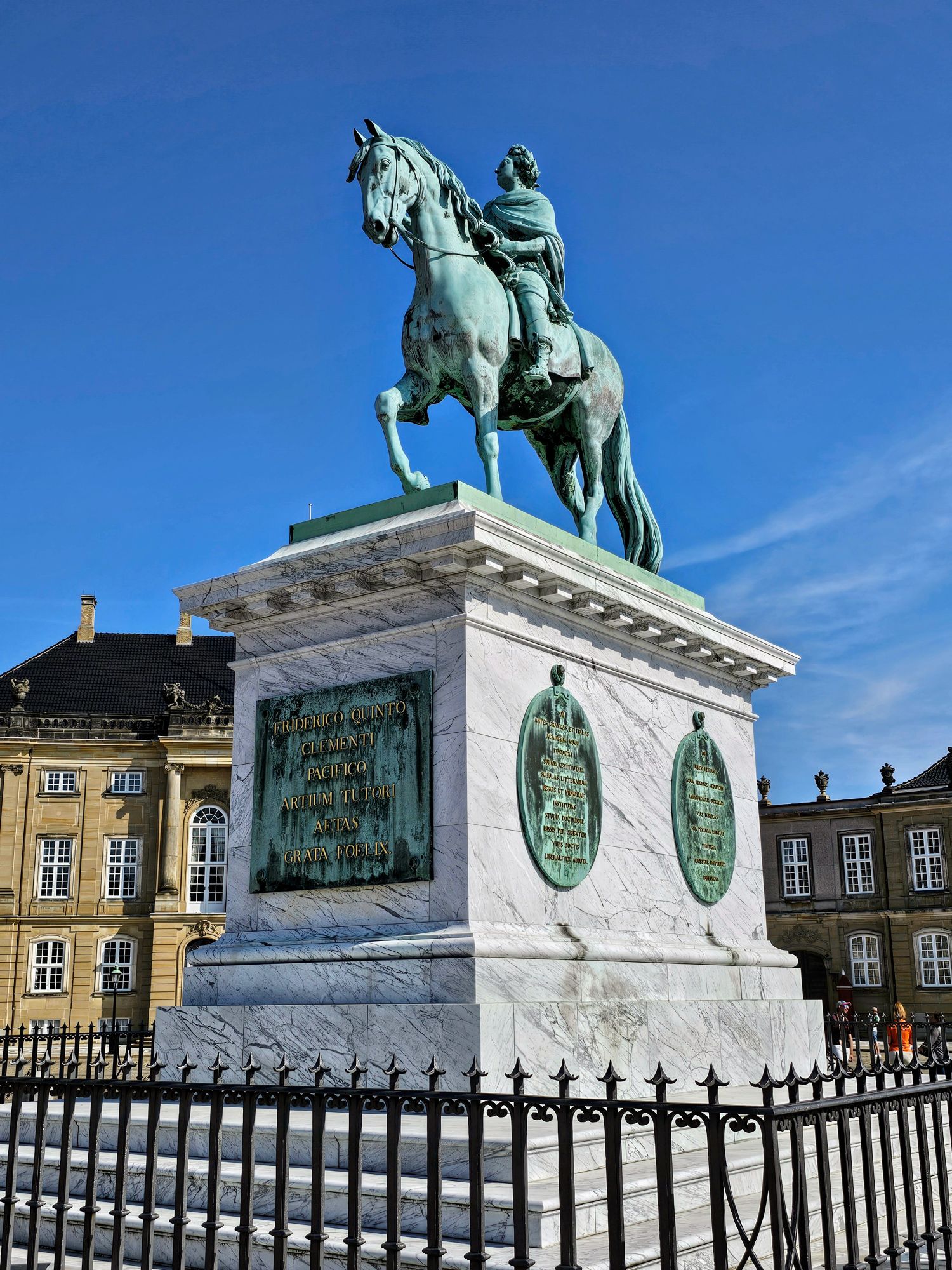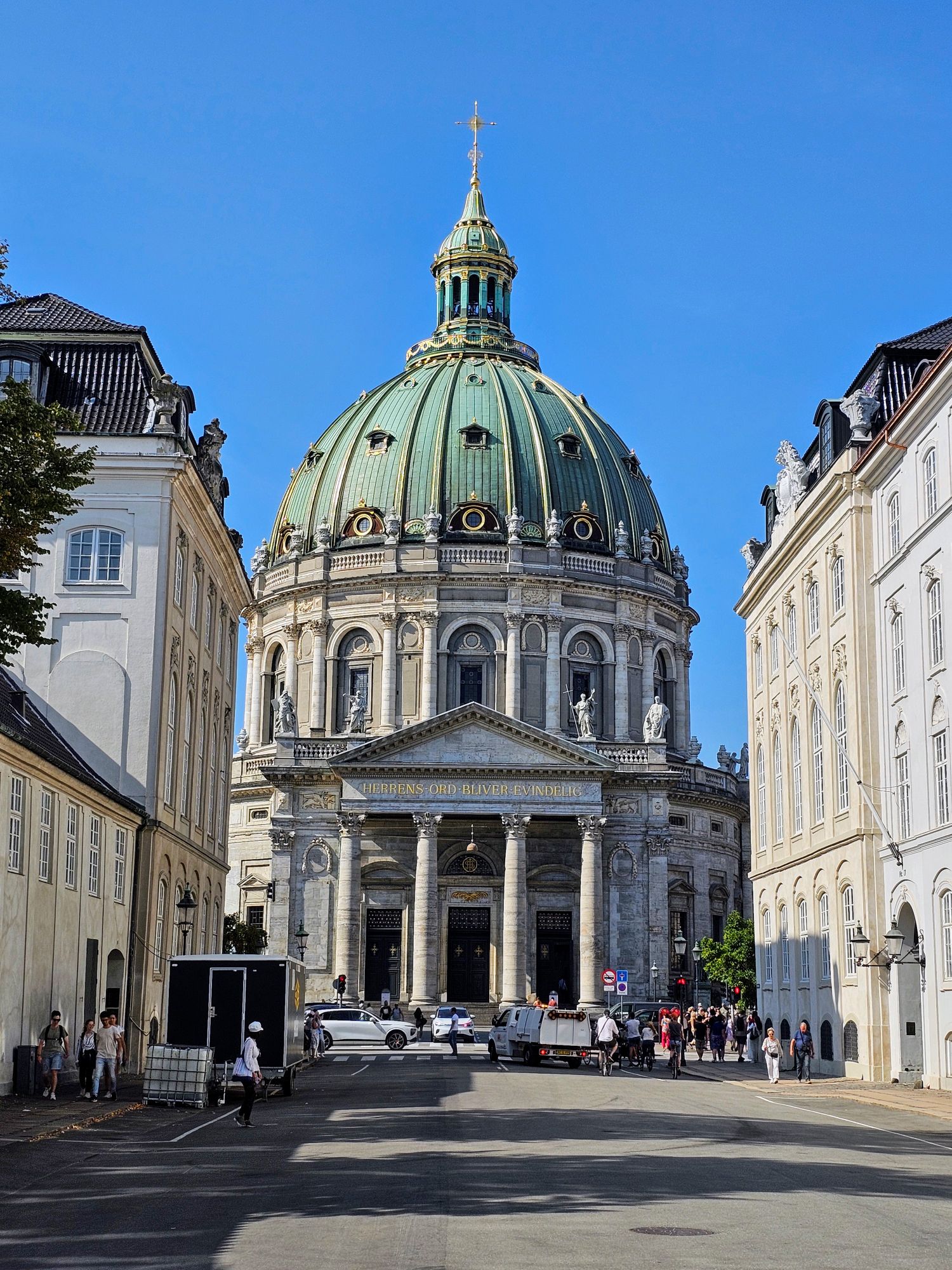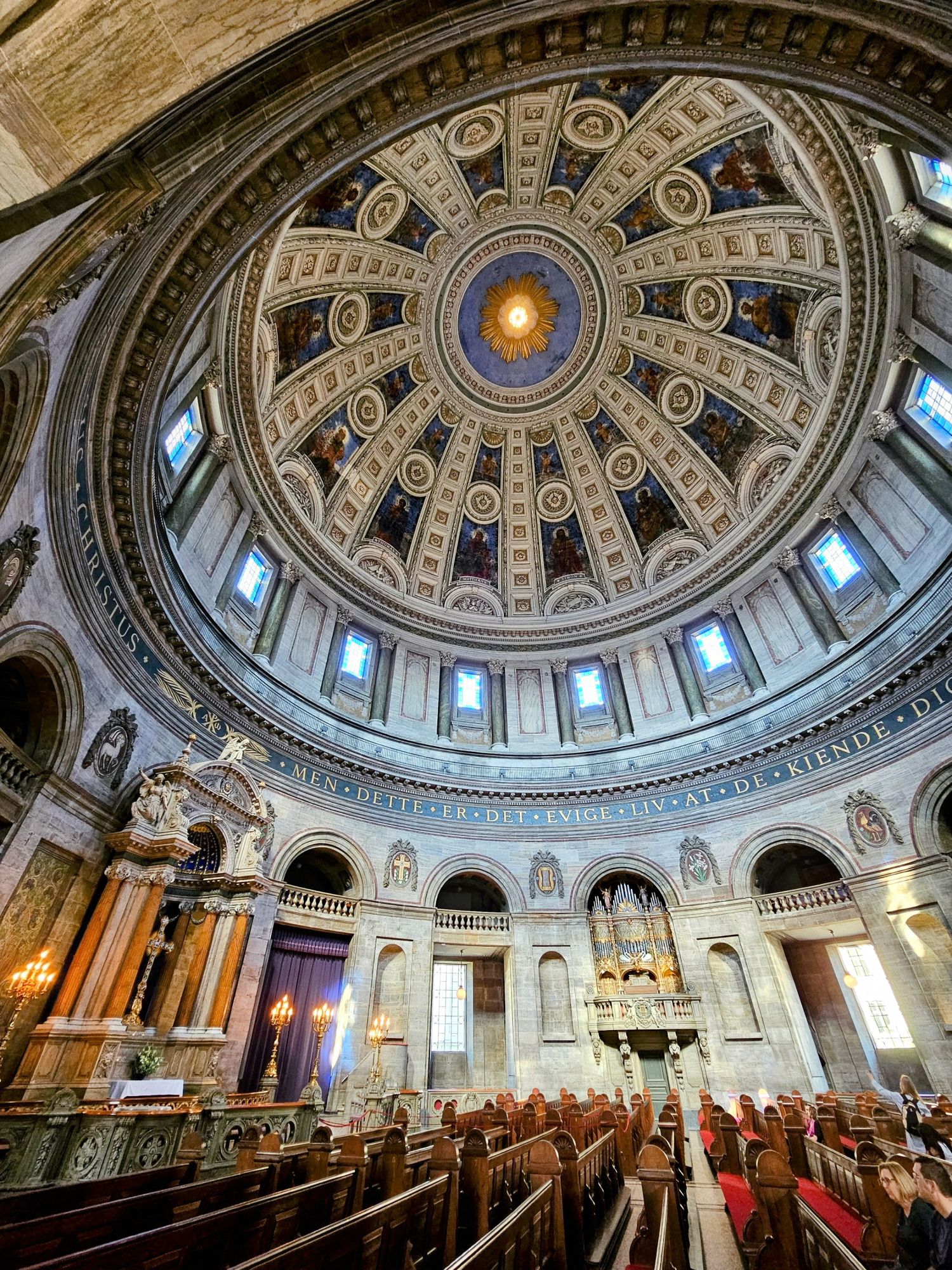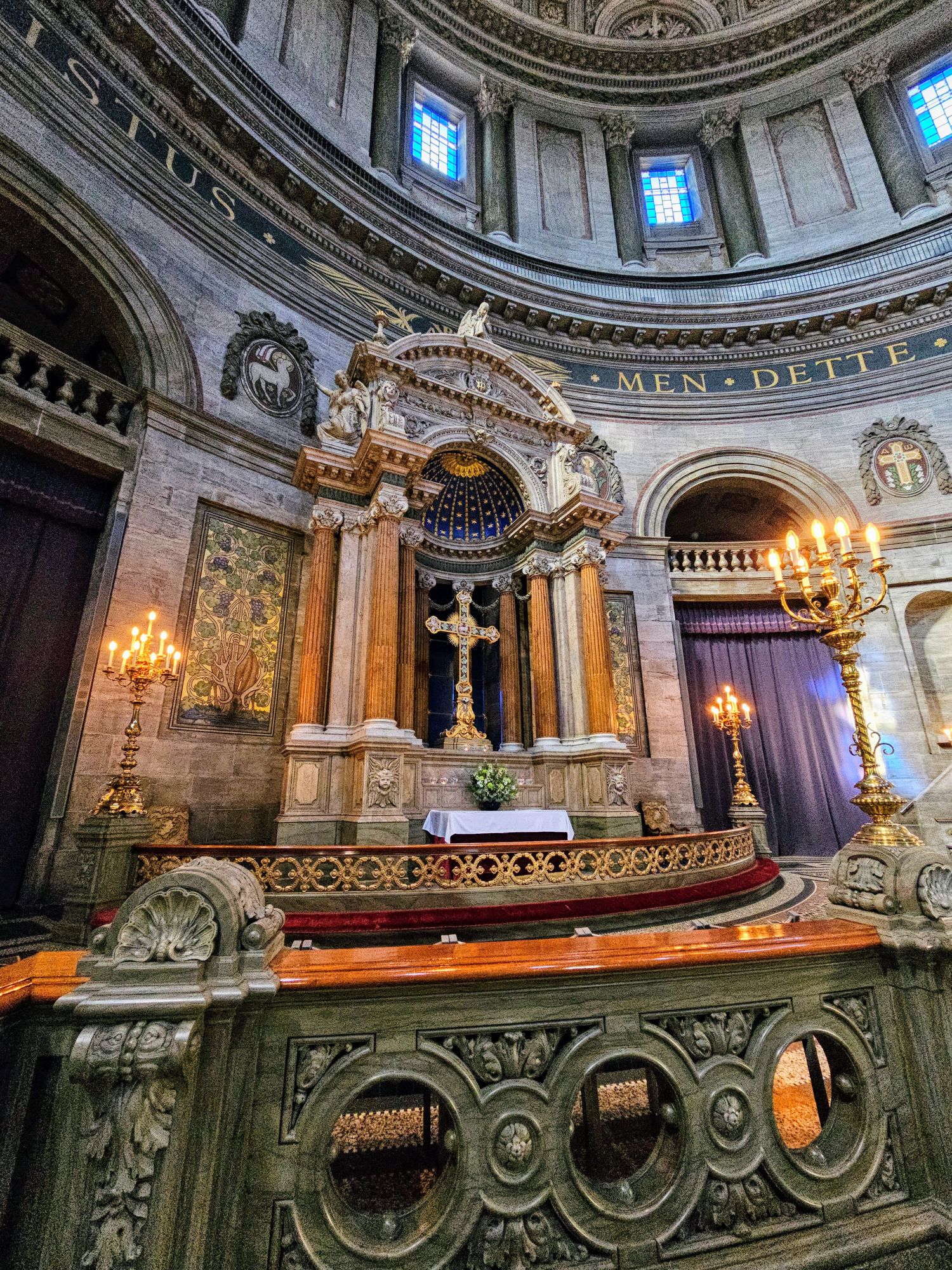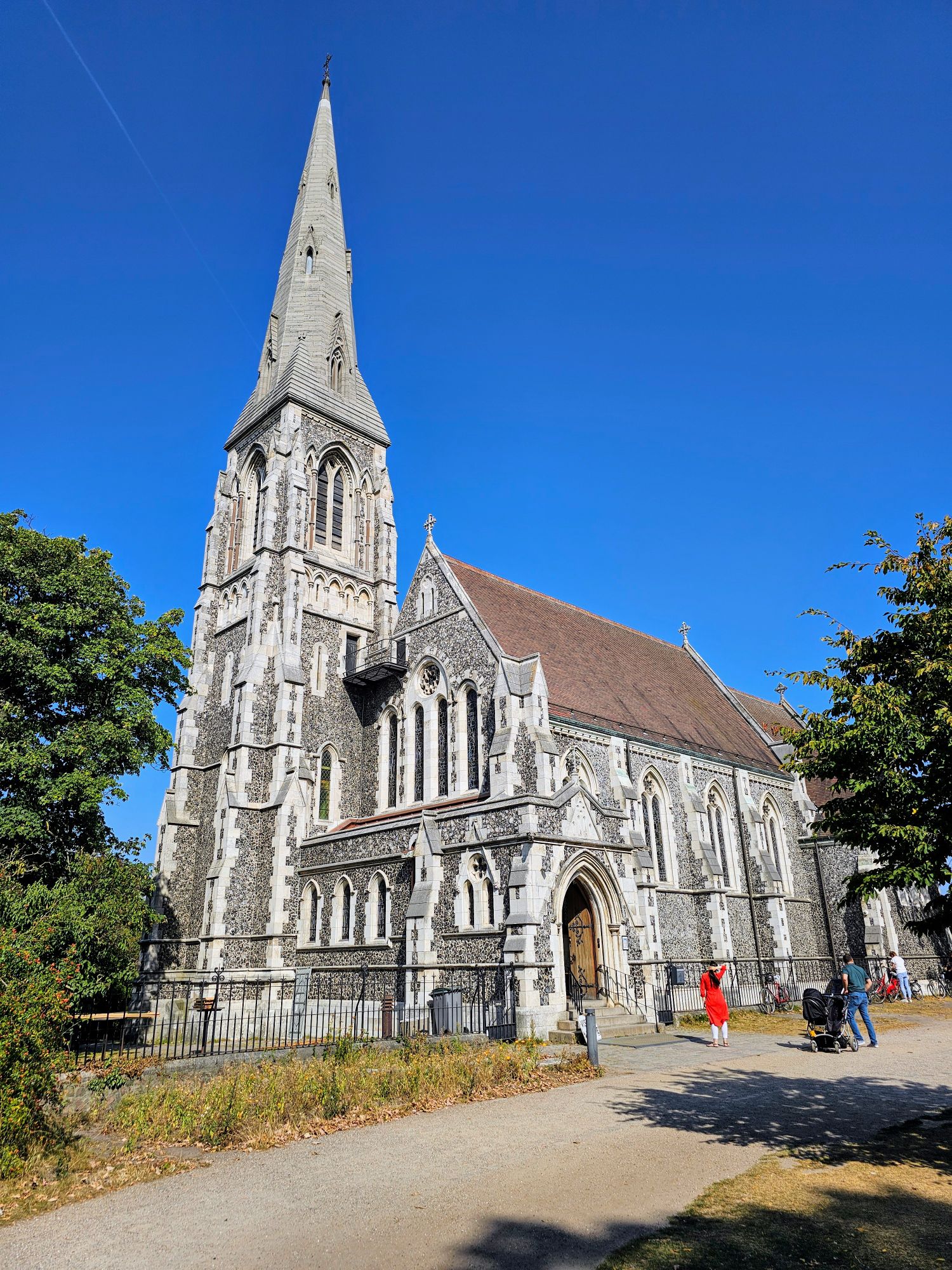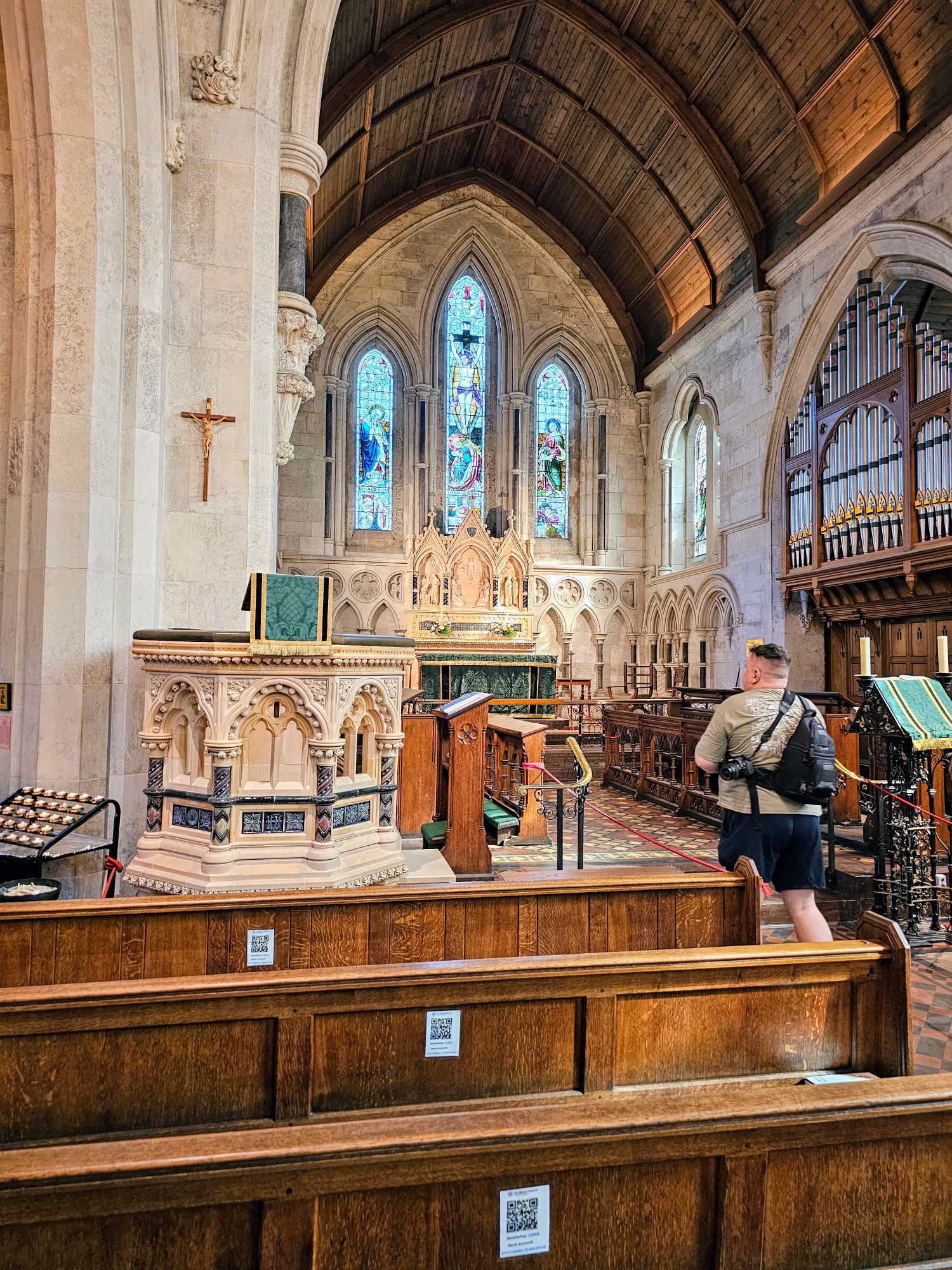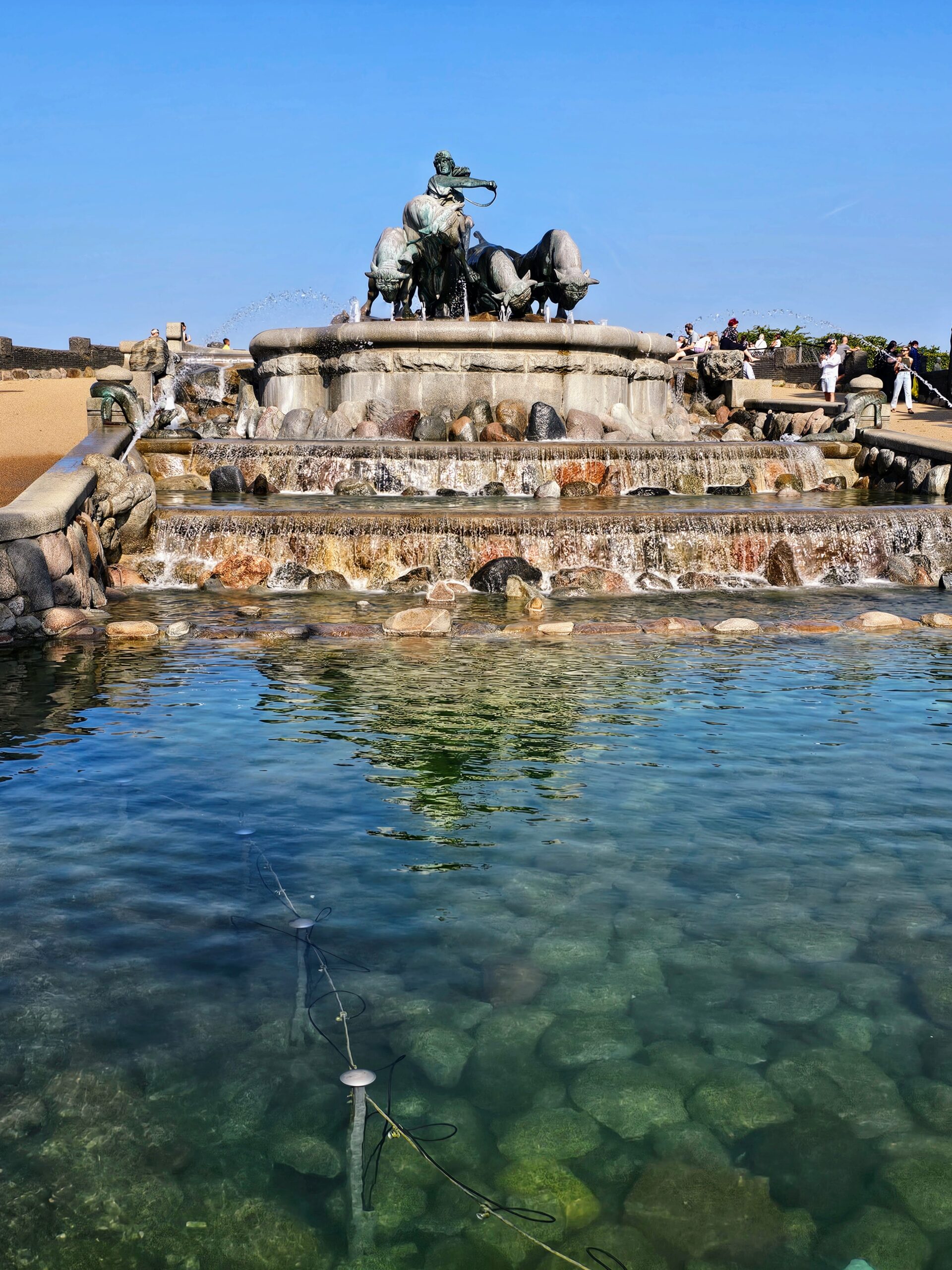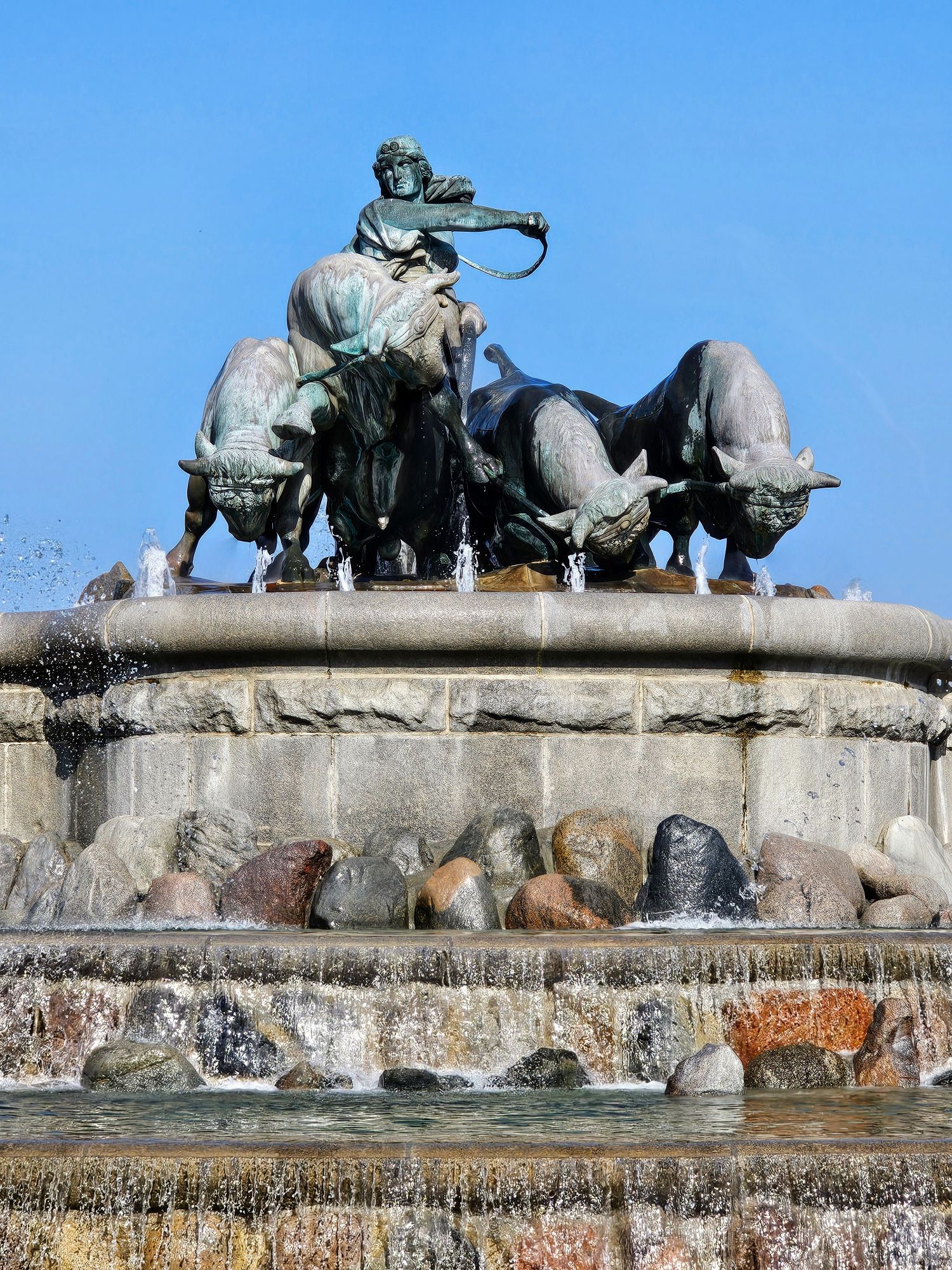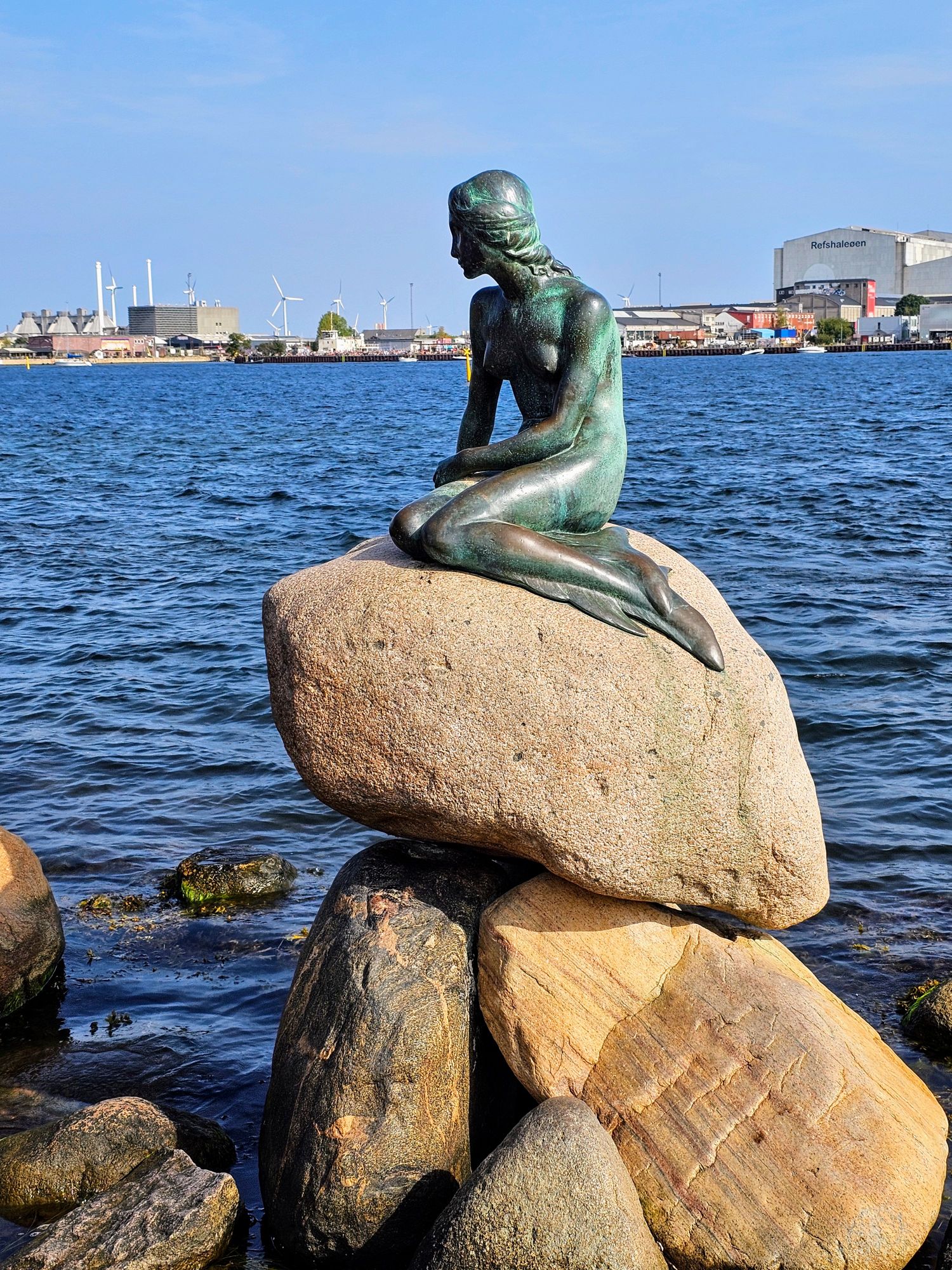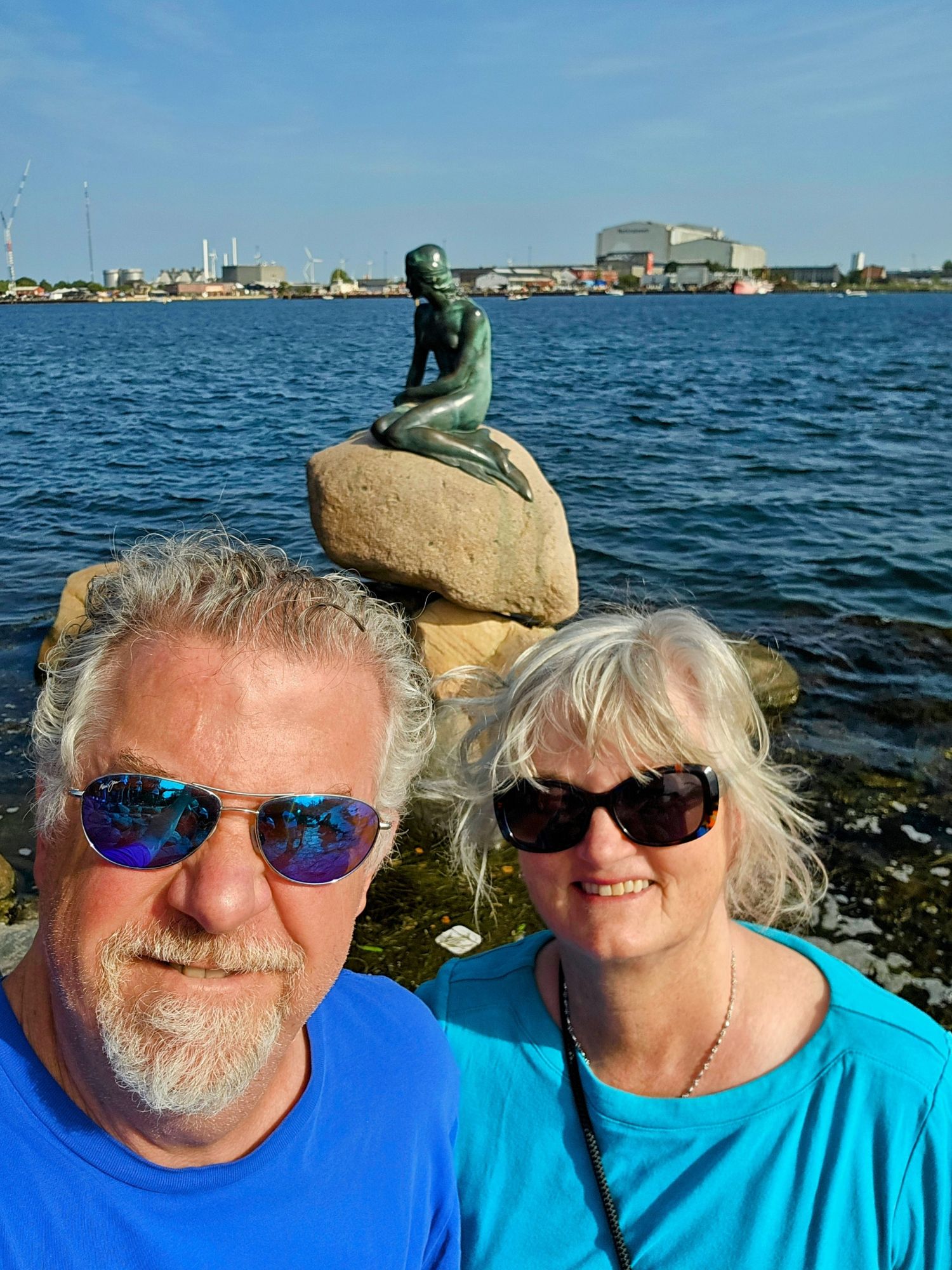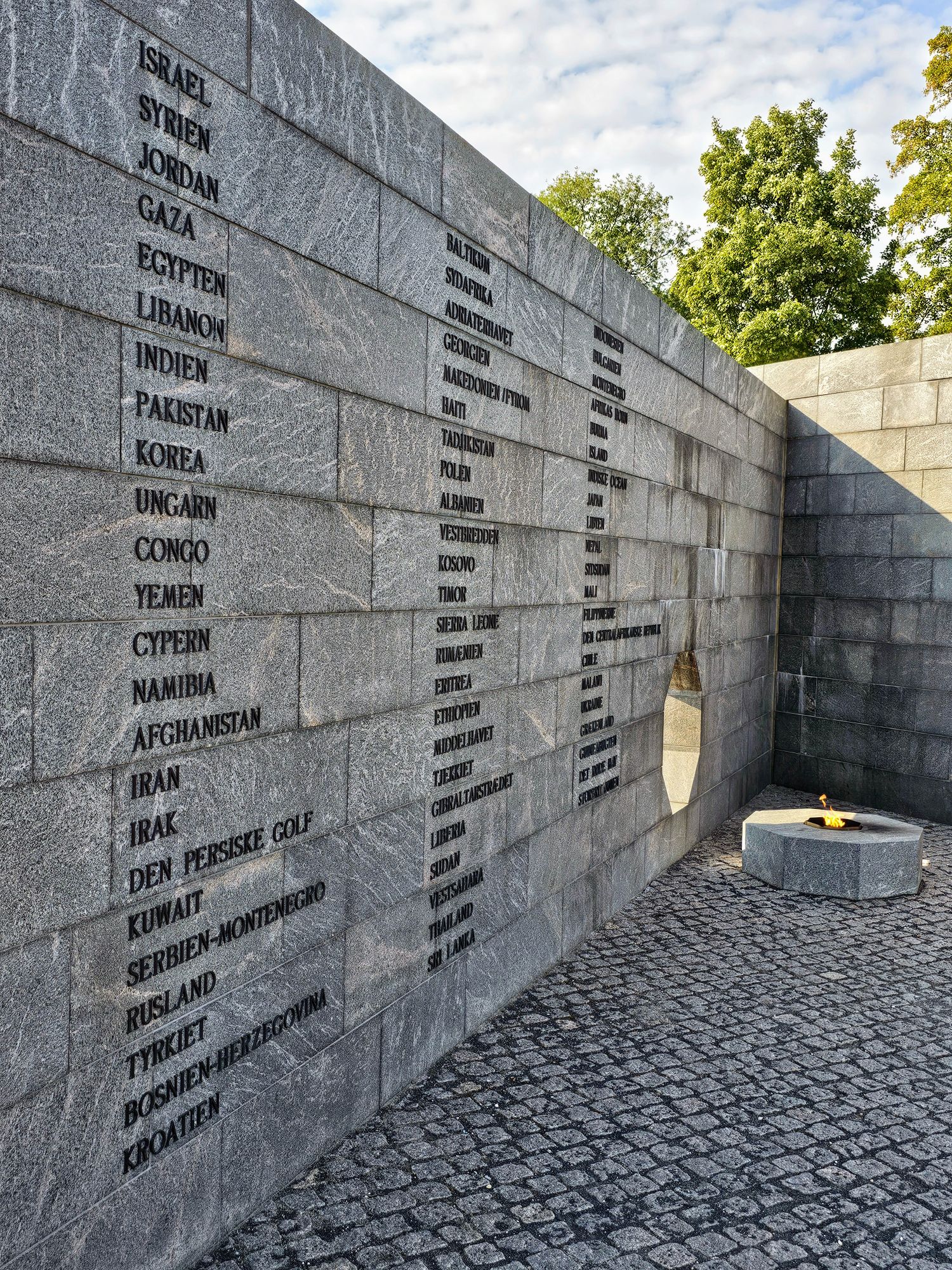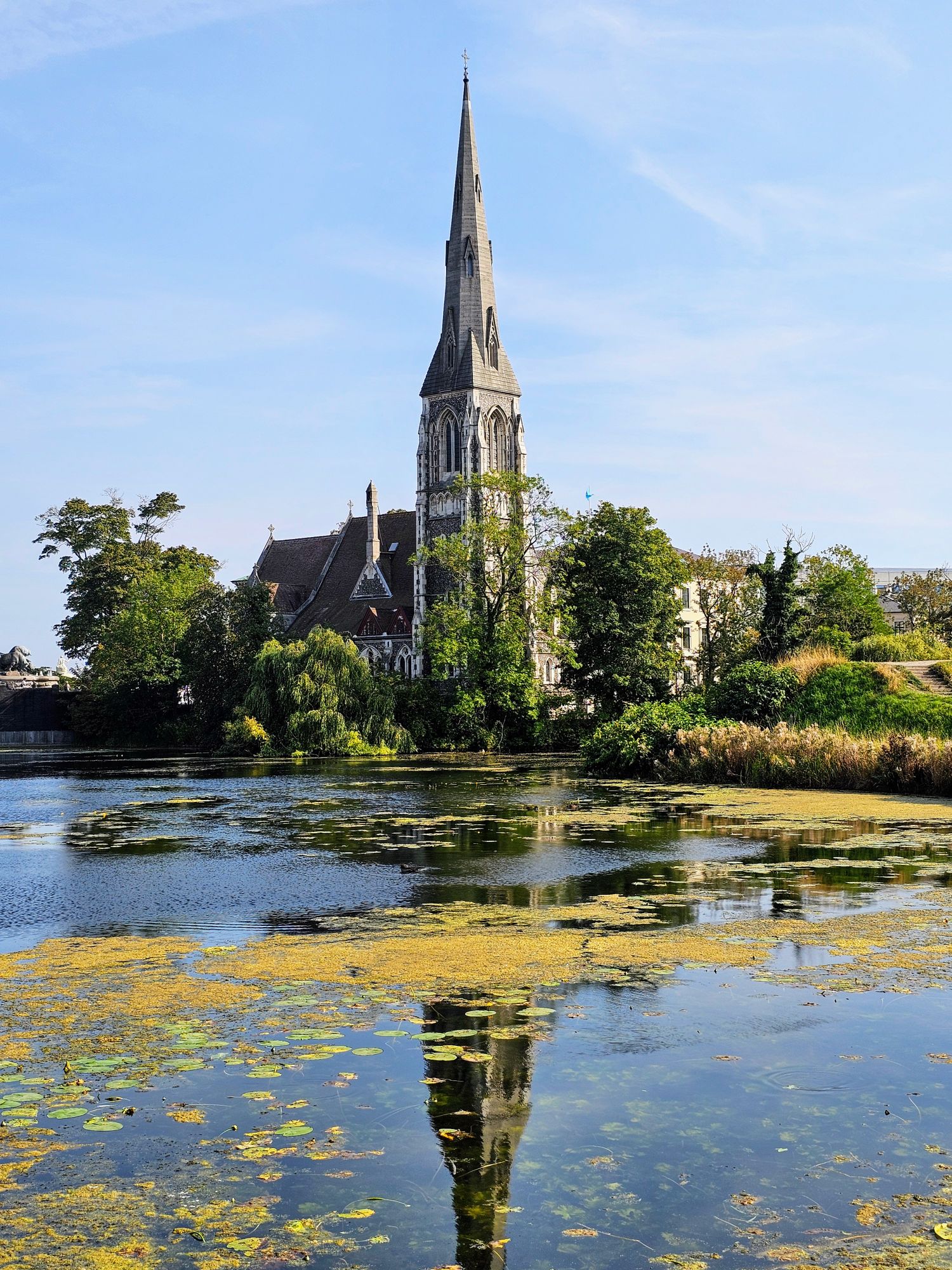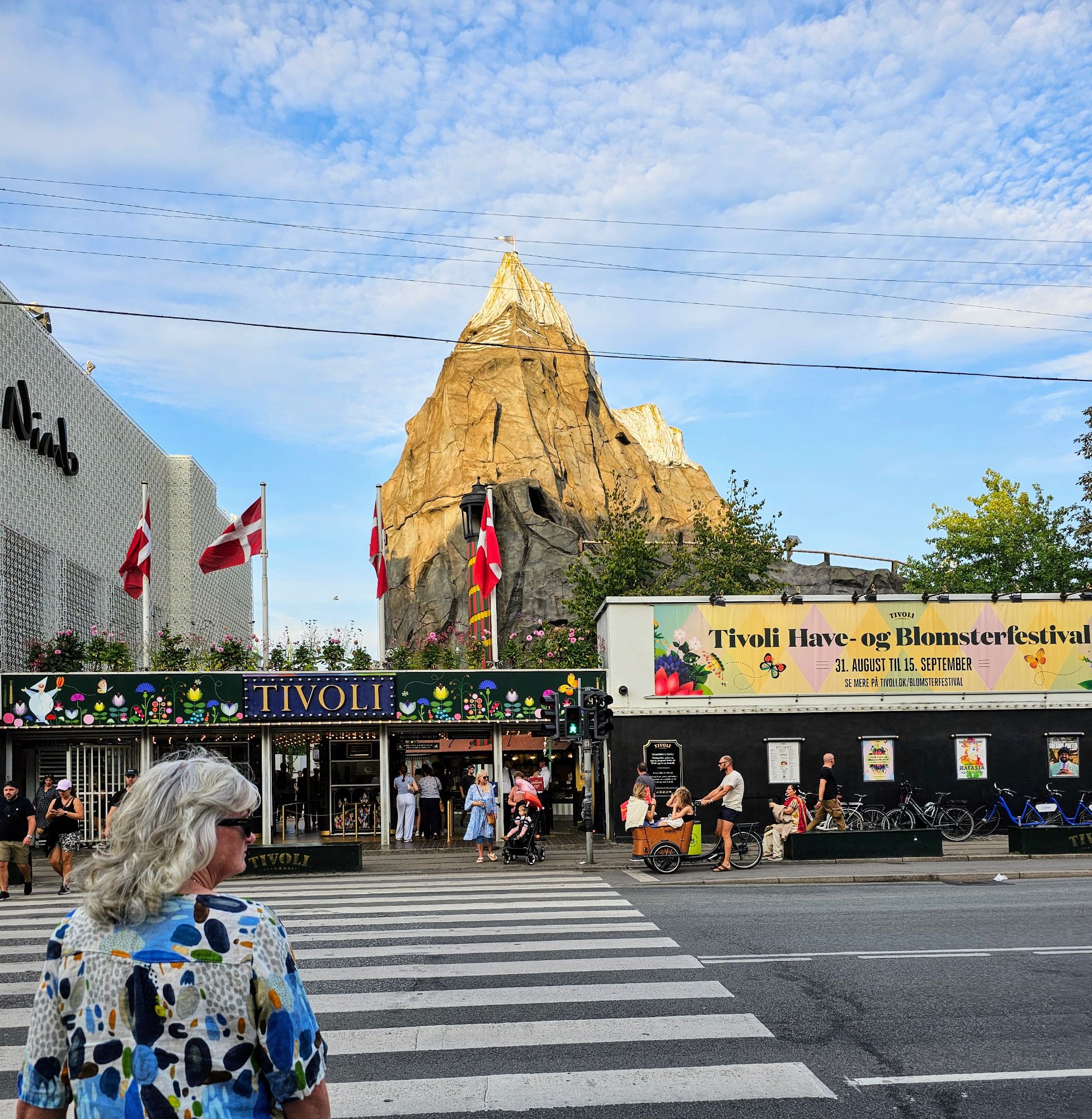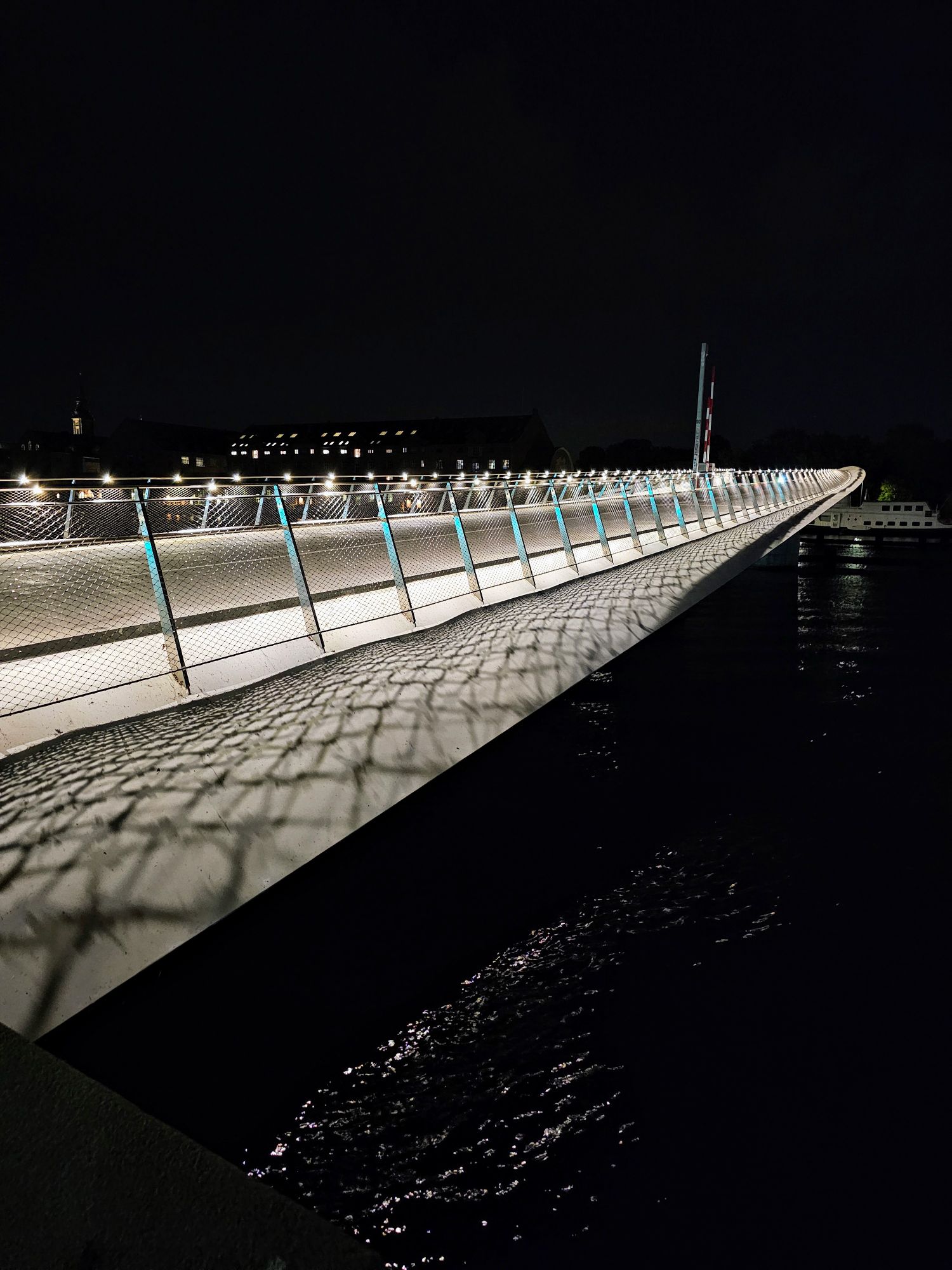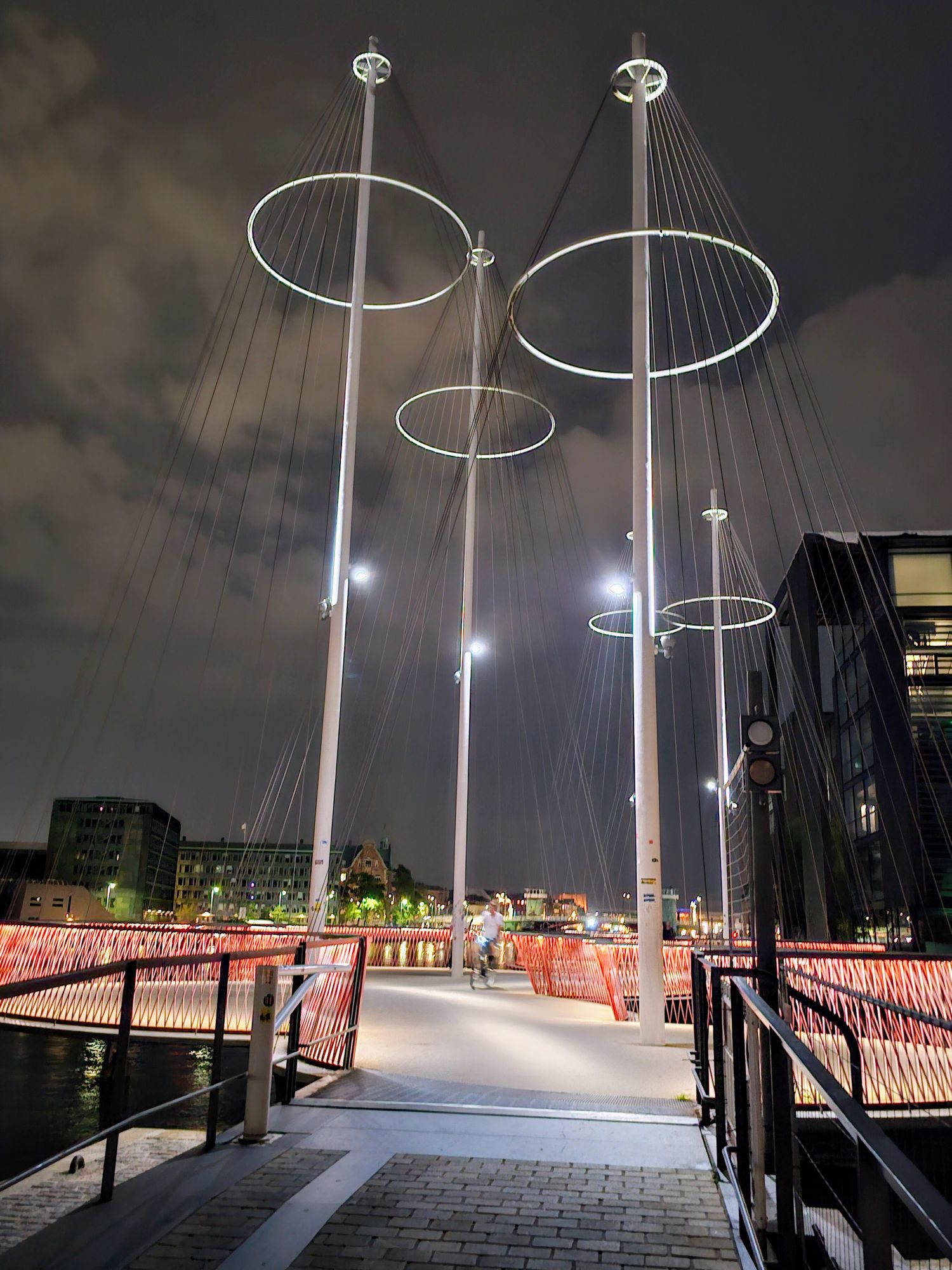We picked up our rental car at the Copenhagen Airport and drove northwest to Odden, where we caught a ferry to the historic city of Aarhus. This is the second largest city in Denmark, but it feels dramatically smaller than Copenhagen. The city dates from the late 8th century, and for a period was a fortress for the Vikings.
We checked into our hotel and just outside our room was this beautiful rooftop. This is the ARoS Art Museum, which we didn’t visit, as it’s mostly modern art, which isn’t our thing. However, the roof is very cool! More photos coming from this evenings sunset.
We walked through the old town and onto the waterfront, and visited the local public library, Dokk1. This is the largest public library in Scandinavia.
It reminded us of a library we visited in Gronigen, Netherlands, and it seems to be very popular with the locals. We ran across a large metal structure hanging on the top floor of the library. This is called “The Gong”, and is the largest tubular bell in the world, at 7.5 meters long and weighing 3 tons! When a child is born in nearby Aarhus University Hospital, the parents can press a button at the hospital that rings the gong. Pretty cool!
Across the bay I saw what looks to be a statue of a ship’s hull. It’s an industrial area so we couldn’t get any closer to check it out.
On the waterfront is a pretty cool fountain called Endless Connection. I can just imagine how popular this spot would be on a warm summer day!
That night we watched an incredible sunset from our hotel balcony.
A close-up of the ARoS Museum roof a few minutes later.
One final look at the gorgeous skyline, with the museum roof all lit up.
The next day we made our way just south of Aarhus to visit The Infinite Bridge.
Every beach should have one of these round piers you can walk around!
Just a little further south is this gorgeous building built into the hillside.
This is the Moesgaard Museum, one of the best museums we’ve ever been to! It’s fairly new, opening in 2014, and uses state of the art technology to tell the stories of Denmark’s past.
There are several permanent exhibitions that cover the Stone Age, the Bronze Age, the Iron Age, the Viking Age and the Middle Ages. You could easily spend a full day here, and if you want to experience everything in a museum (a problem I tend to have) I could even see spending two days here! We only spent 4 hours, so I will just cover the highlights here.
The Stone Age exhibit (covering 12,500 to 1700 BC) has some very cool tech that shows how Denmark evolved after the ice age.
It has realistic looking sets that depict how life looked for early man. This set portrays a shell mound created after years of living in the same place.
This remarkable clay disc, discovered just north of Aarhus, depicts two stages of a solar eclipse that occurred on May 5, 2789 BC. The age of this thing is amazing!
The museum also hosts the Grauballe Man, a body found in a peat bog in Denmark in 1952. Apparently it was quite a sensation back in the day! The body dates back to the 3rd century BC, while the conditions in the bog preserved the body as if they had just died. It’s been determined he was killed, most likely as some sort of human sacrifice, as his throat was slit. The red hair comes from the conditions in the bog.
During the Viking Age, Aarhus was known as Aros. This depiction of the city during the time of the Vikings (from 800-1066) is superimposed by the current Aarhus Cathedral, giving a good feel for how small the city was at that time.
The Viking Age exhibit had a group of people who you could follow through their every day life by listening to numerous stories. The wax figure to the left of Kim in this photo looked pretty damn real!
On the stairs below the top floor were wax figures of several influential people throughout history. This is another one that looked so real it was kind of creepy.
We had missed this one section so we back-tracked so we could check out the Gokstad Boat. This is one of the boats that was uncovered with the Gokstad Ship, a 9th century Viking ship that was discovered in a burial mound in 1880. Unfortunately, the Gokstad Ship is in the Viking Ship Museum in Oslo, which we couldn’t visit as it’s currently being renovated. However, at least we could see one of the original boats that the ship carried onboard so they could go ashore. It’s in remarkable condition!
Coming up next, we visit Mols Bjerge National Park, and see some more sights in Aarhus.
